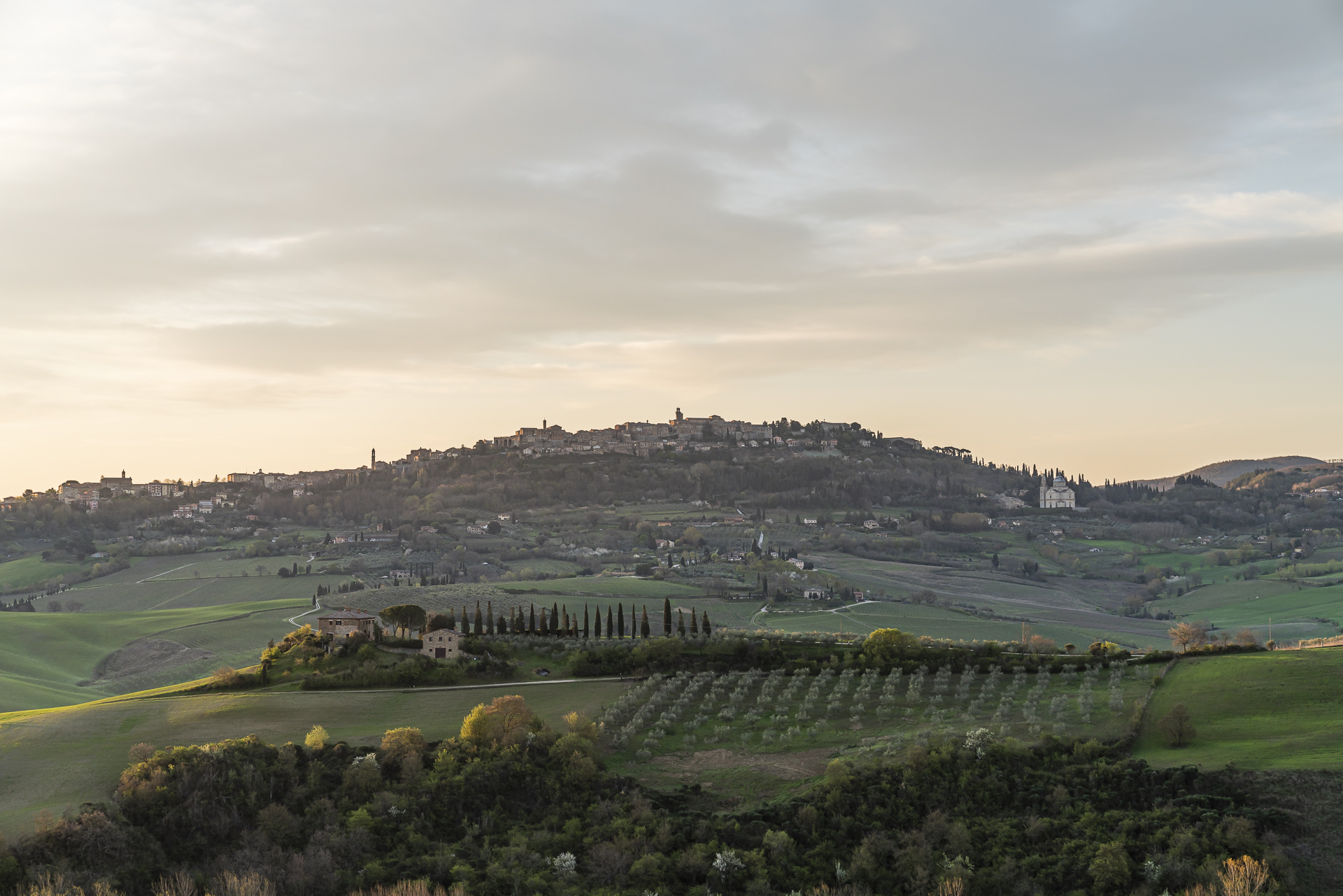
Val d’Orcia: Favorite places and tips from our Tuscany short trip
Actually, the title is a bit misleading – our three-day trip to the Val d’Orcia in Tuscany was not a “short trip” in the classic sense. Rather, the beautiful country estate “Lupaia” not far from Montepulciano served us as the first stop of a two-week trip to Italy. But if you don’t have two weeks on reserve, I can definitely recommend a detour to the province southeast of Siena in spring/early summer. Tuscany shows itself from its most beautiful side here! How and where exactly – I’ll show you in the following lines!
The Val d’Orcia at a glance
The Val d’Orcia, which belongs to the province of Siena, encompasses the lovely hilly landscape between the towns of Montepulciano and Montalcino (in an east-west direction) and descends in a southerly direction to Radicofani. It is named after the 70-kilometre-long river “Orcia”, which meanders through the region from east to west from Casciano dei Bagni. Since 2004, the Val d’Orcia has been a UNESCO World Heritage Site and has become one of Tuscany’s top tourist destinations.
The distances between the individual villages are – at least by Italian standards – manageable. To get from Montepulciano to Montalcino takes about 45 minutes (about 40 kilometers). And from San Quirico d’Orca to Radicofani it takes about 30 minutes by car (30 kilometers). This means that with a time budget of two to three days, you can easily “check out” the highlights of the Val d’Orcia. But if you want to spend a relaxing hour or two at the hotel pool in addition to sightseeing, you’d better pick out the sights in a well-dosed way.
Val d’Orcia in 3 days: itinerary & places to visit
That’s exactly what we did, focusing on the Montepulciano – Pienza – Montalcino axis. In addition, we have included a detour to Cortona in our travel program. Cortona is located 30 kilometers northeast of Montepulciano and, strictly speaking, is no longer in the Val d’Orcia, but belongs to the Tuscan province of Arezzo.
1. Lupaia – the picturesque boutique hotel in the heart of Tuscany
As a “base camp” for the sightseeing tour through the Val d’Orcia, we used the historic Lupaia estate between Montepulciano and Pienza (partner link). The boutique hotel-style property was a brilliant coincidence.
The selection of interesting accommodation options almost threatens to overwhelm you when researching accommodation – at least that’s what happened to me. Wineries, Agriturismo, Apartments, Bed & Breakfast; there is definitely something for every taste. Out of all this abundance, however, the Lupaia immediately caught my eye. And when it turned out that it was along our intended route to the south and that there were still free rooms available on the desired date, I didn’t think back and forth for long, but pressed “Reserve”.
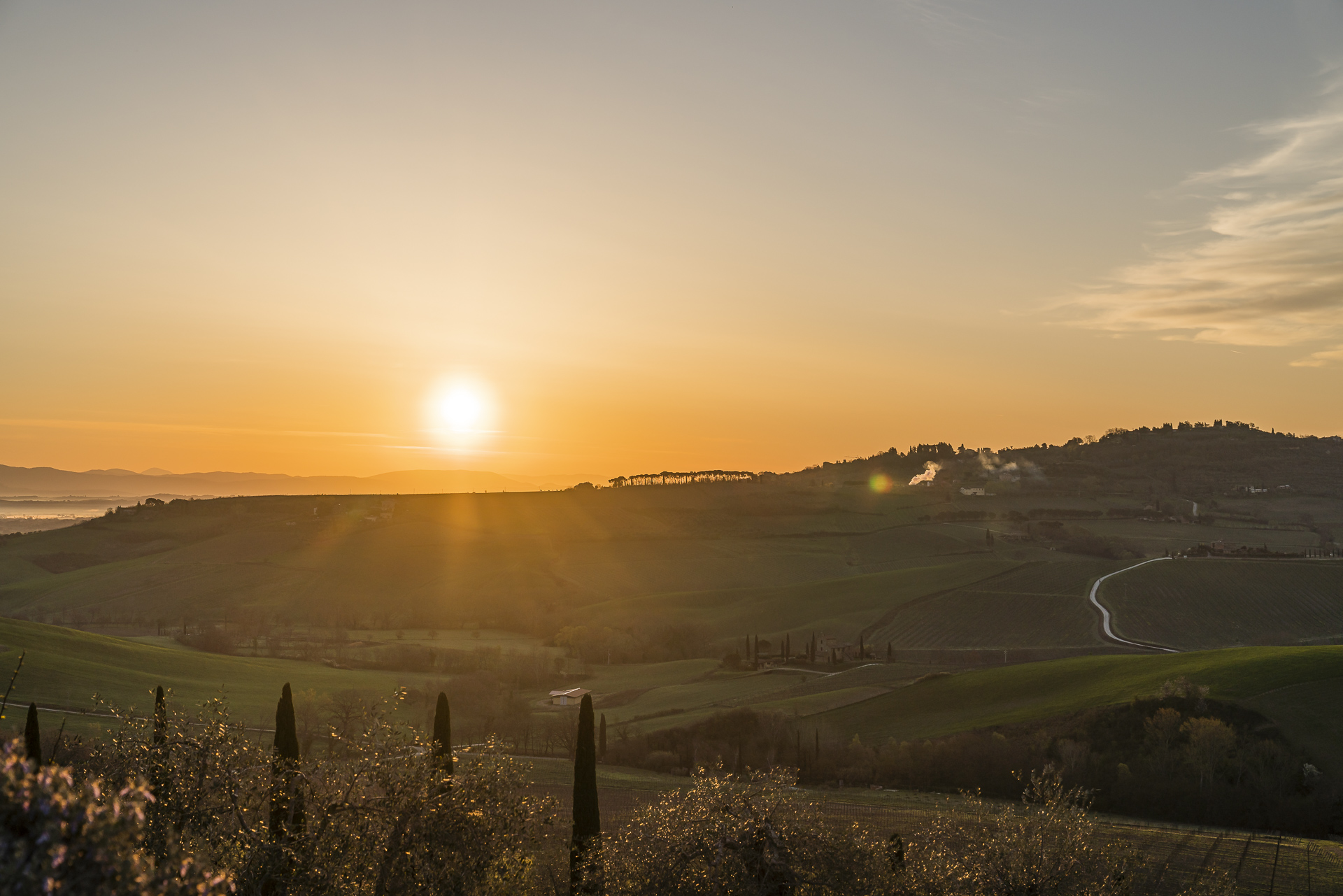
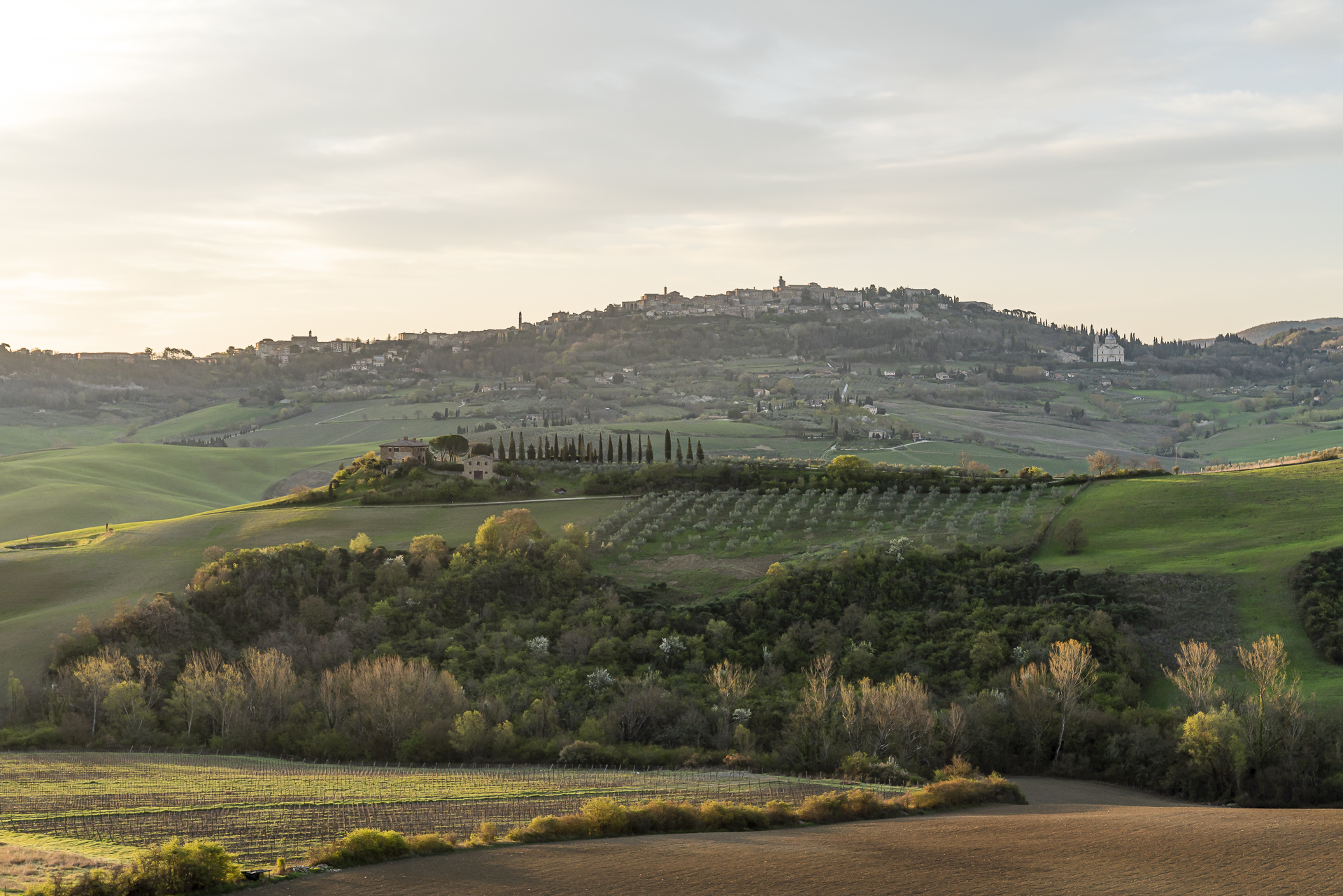
In retrospect, it was a good decision. The Lupaia was able to fully meet my high expectations! The farmhouse is located less than 15 minutes’ drive along a gravel road from Montepulciano, on a hill with a splendid panoramic view of the cultural landscape typical of this region, consisting of olive groves, cypresses, vines and beech forests. A total of 11 rooms and suites are spread over the main building and various smaller annexes. We had booked the standard room «Aurora», which includes a «private» garden and is located right next to the pool.
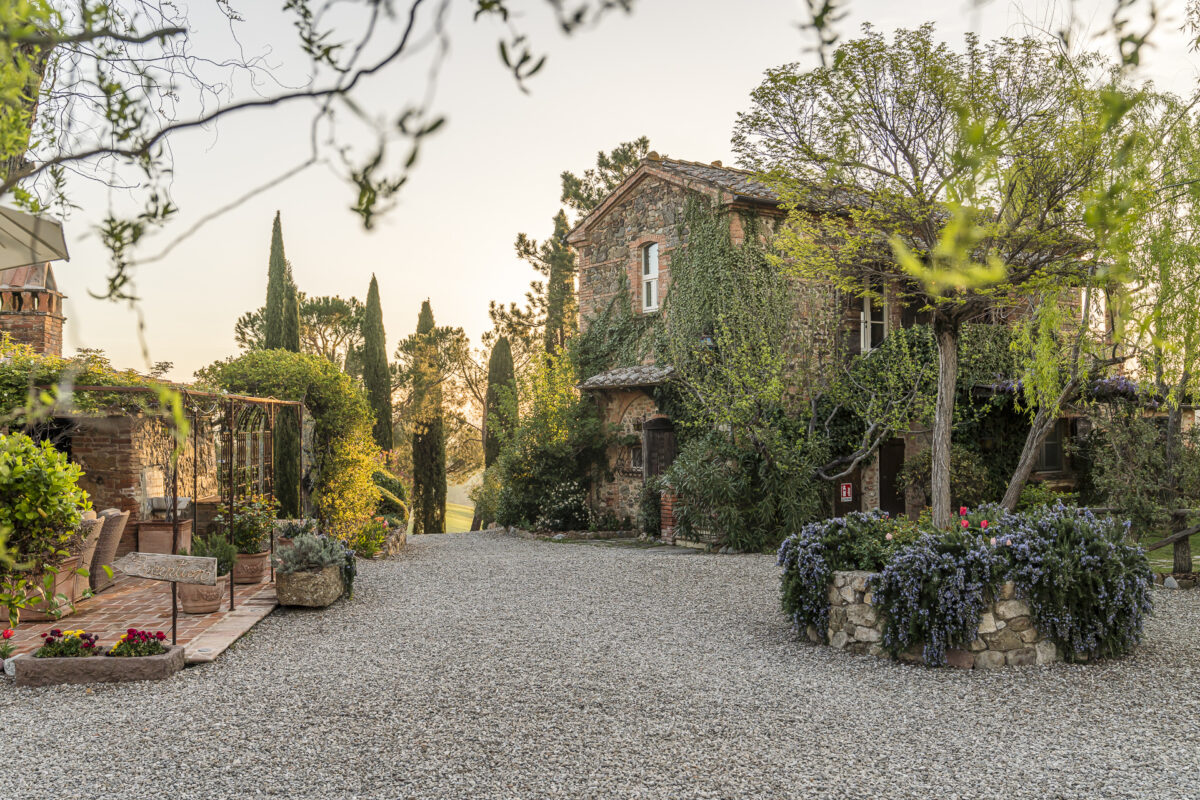
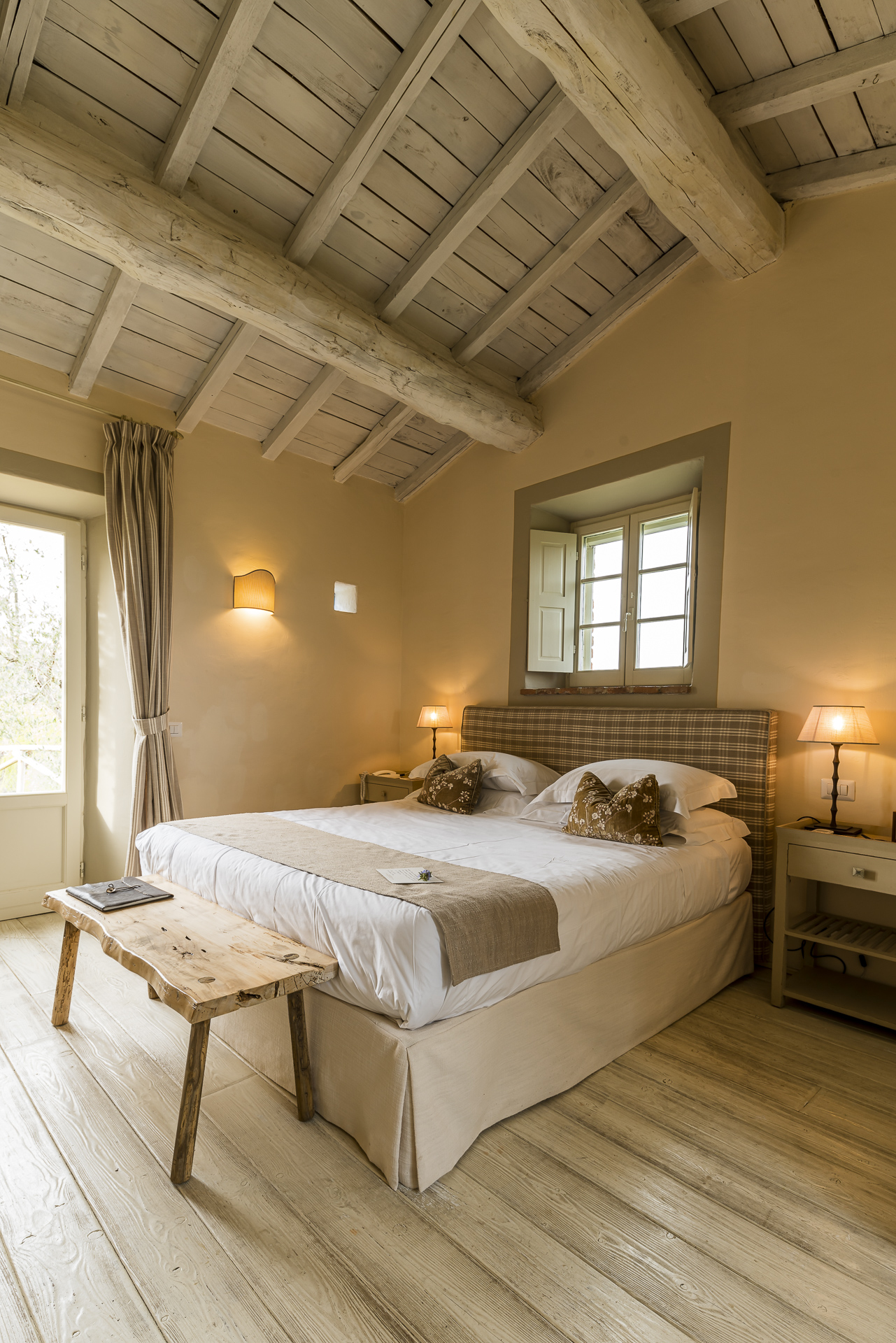
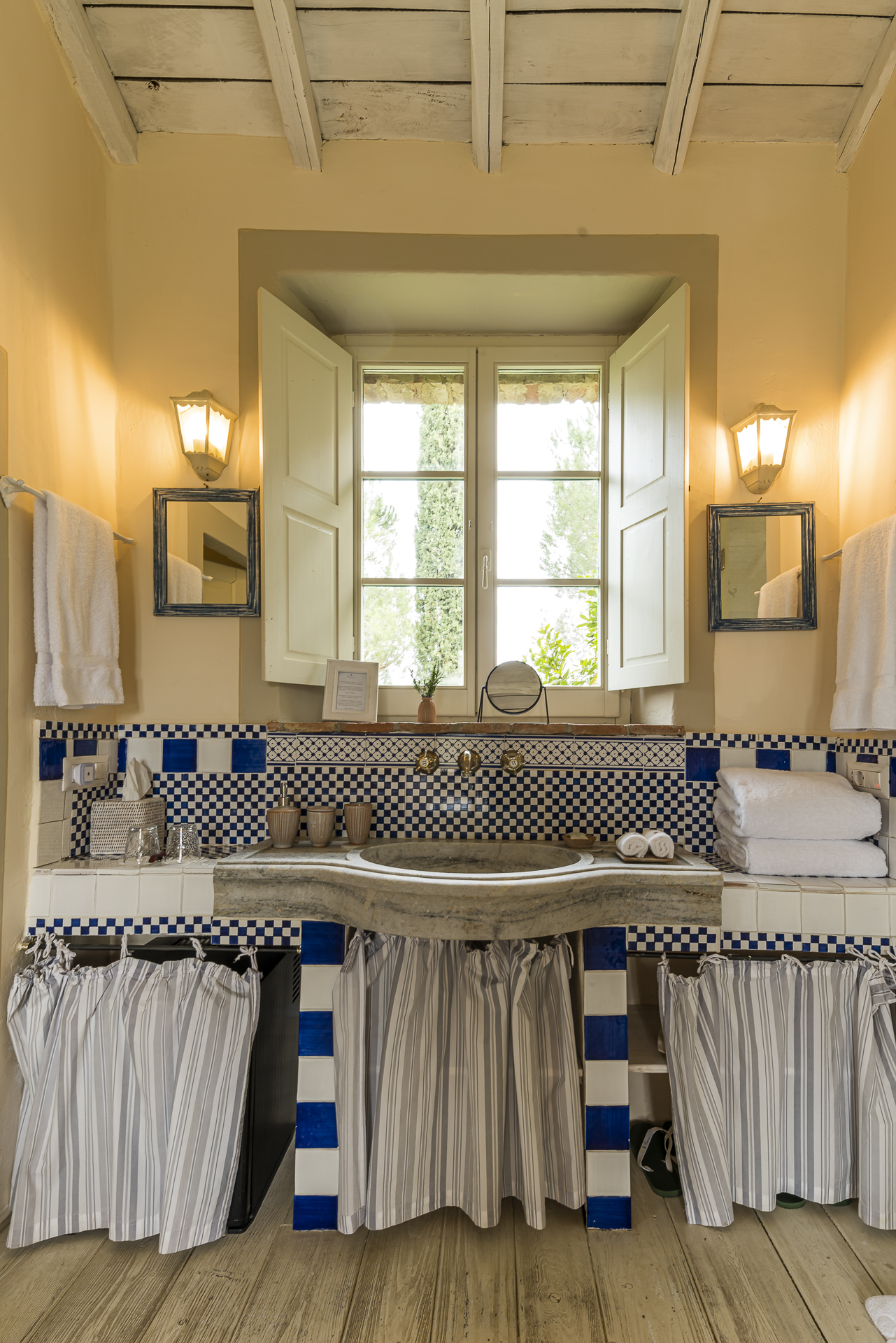
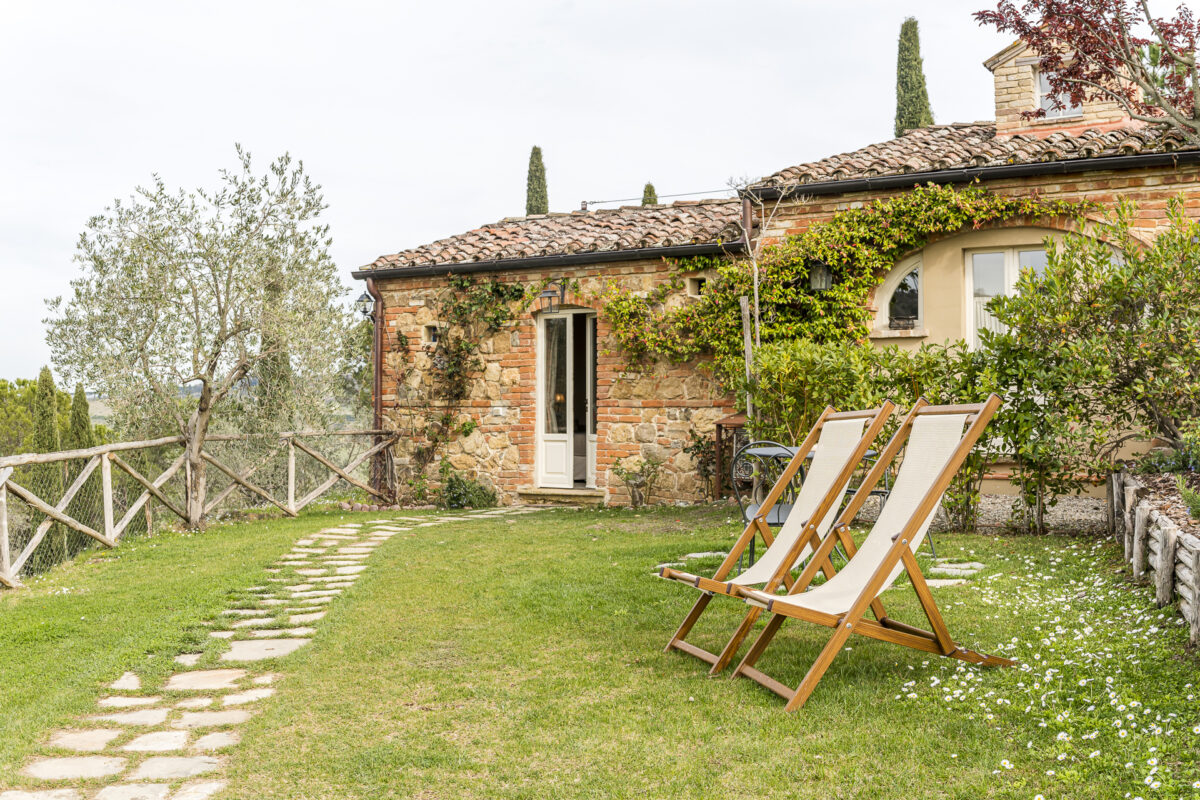
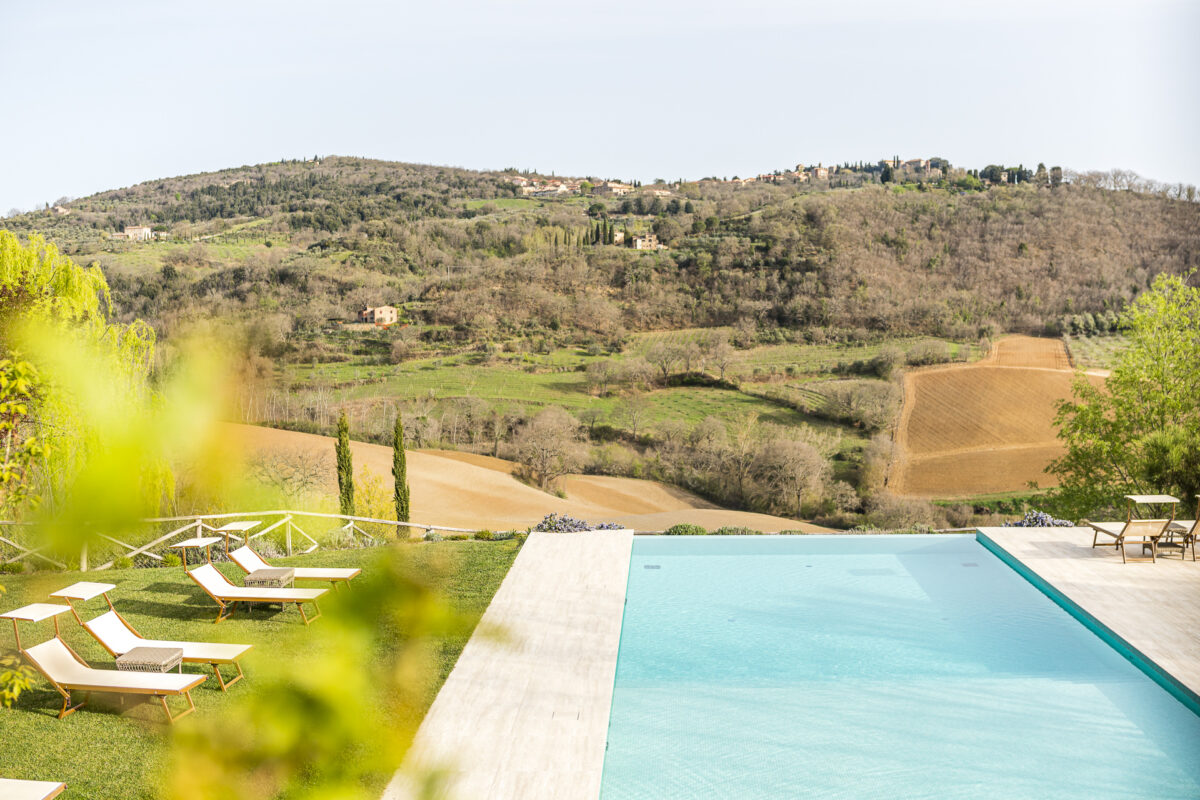
The hotel’s restaurant is also recommended. Here, a fresh Tuscan 4-course menu is cooked daily in an open kitchen. Wherever possible, seasonal organic vegetables from the hotel’s own cultivation are used. Breakfast is served à la carte, which we also liked. The only thing to note is that the breakfast menu reflects the international mix of guests. French toast and porridge are rather unusual breakfast components by Italian standards.
The Lupaia (affiliate link) offers 5-star comfort. This is also reflected in the room prices, which start at around 700 euros for two nights in a double room with breakfast. Please also note that single nights can only be booked at short notice and a minimum stay of 2 nights is usually required. The dinner menu costs 65 euros per person.
2. The Town Hall Tower in Montepulciano
We were not satisfied with the postcard view of Montepulciano, proudly enthroned on a hill, but of course also paid a visit to the pretty Tuscan small town. Montepulciano can be reached from Lupaia on foot (about 5 kilometres – 75 minutes walk), by bike (rental bikes are available) or by car.
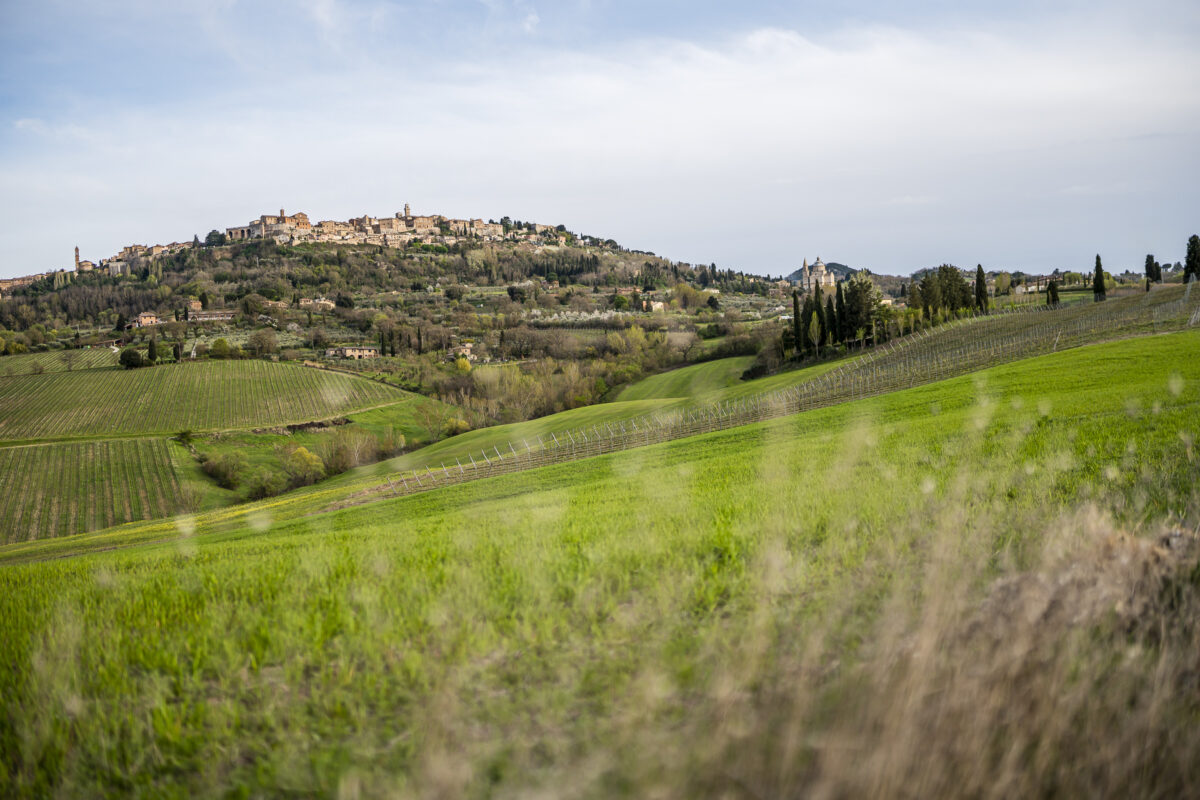
For topographical reasons, you can’t avoid one or two meters of altitude when strolling through the medieval old town streets of Montepulciano. With the prestigious “Piazza Grande“, the heart of the old town is located at its highest point. The Piazza Grande is lined with the Duomo, elegant palace buildings from the 16th century (the Palazzo Nobili-Tarugi and Contucci) and the representative Town Hall (a miniature version of the Palazzo Vecchio in Florence).
For the most beautiful view of the rooftop landscape of Montepulciano, it is worth accepting a few additional meters of altitude at this point. The town hall tower is accessible from April to November from 10:00 a.m. to 6:00 p.m. (entrance fee: 5 euros).
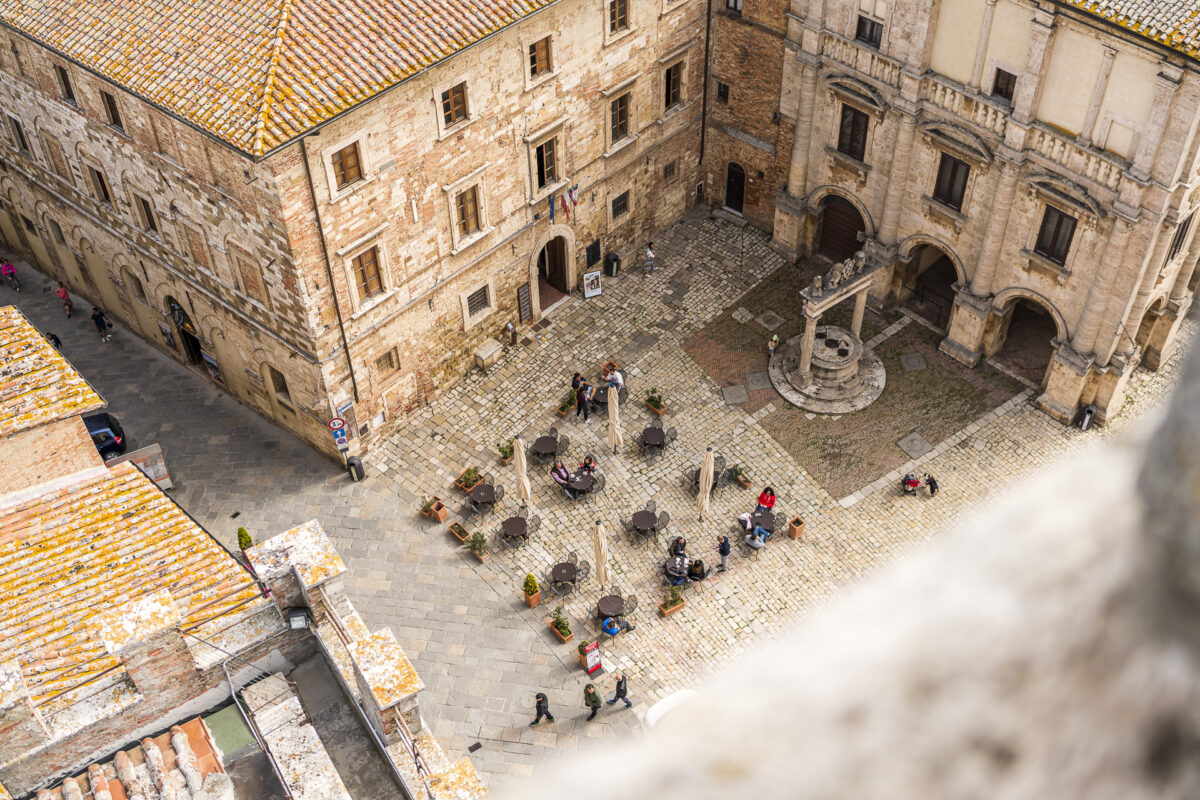
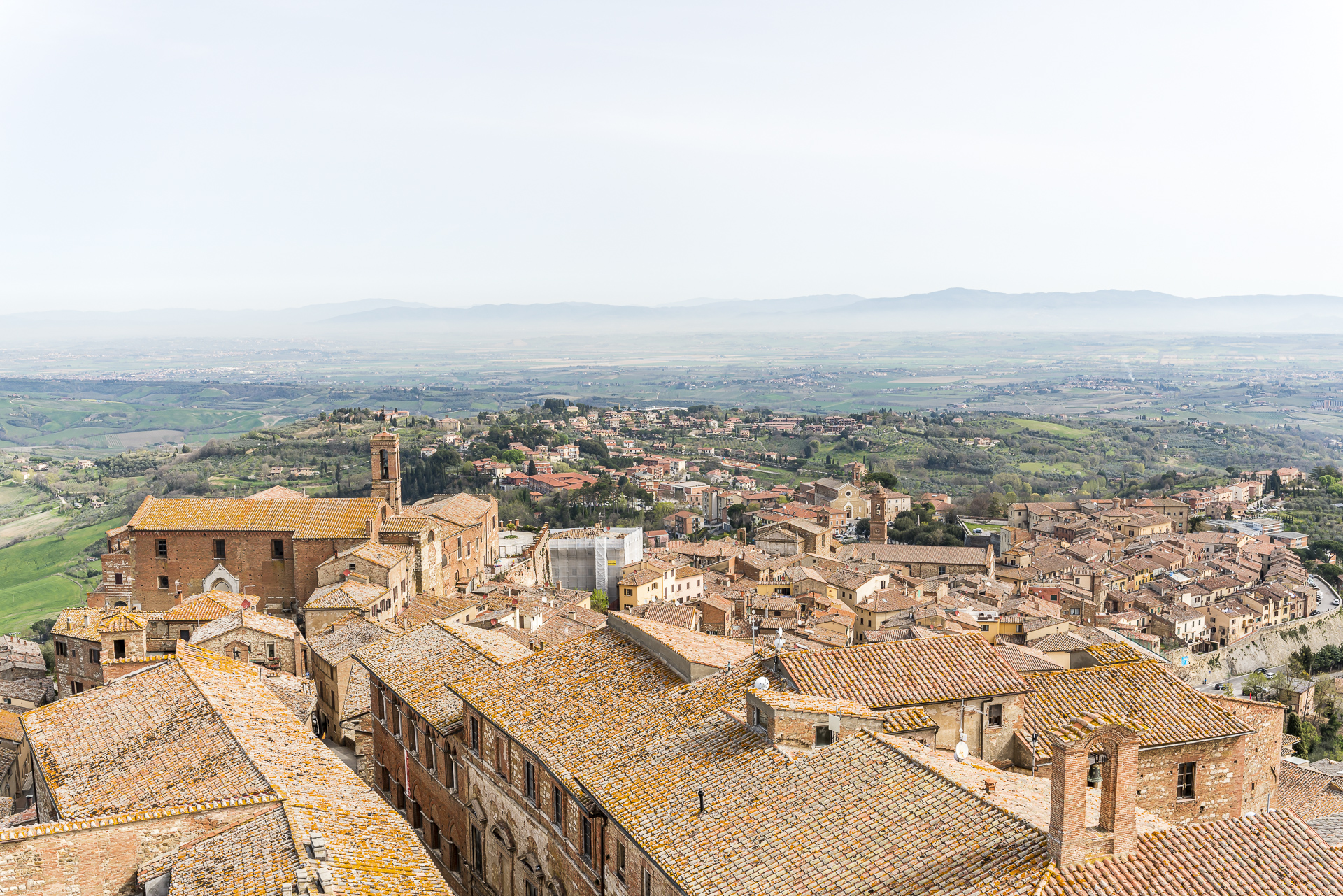
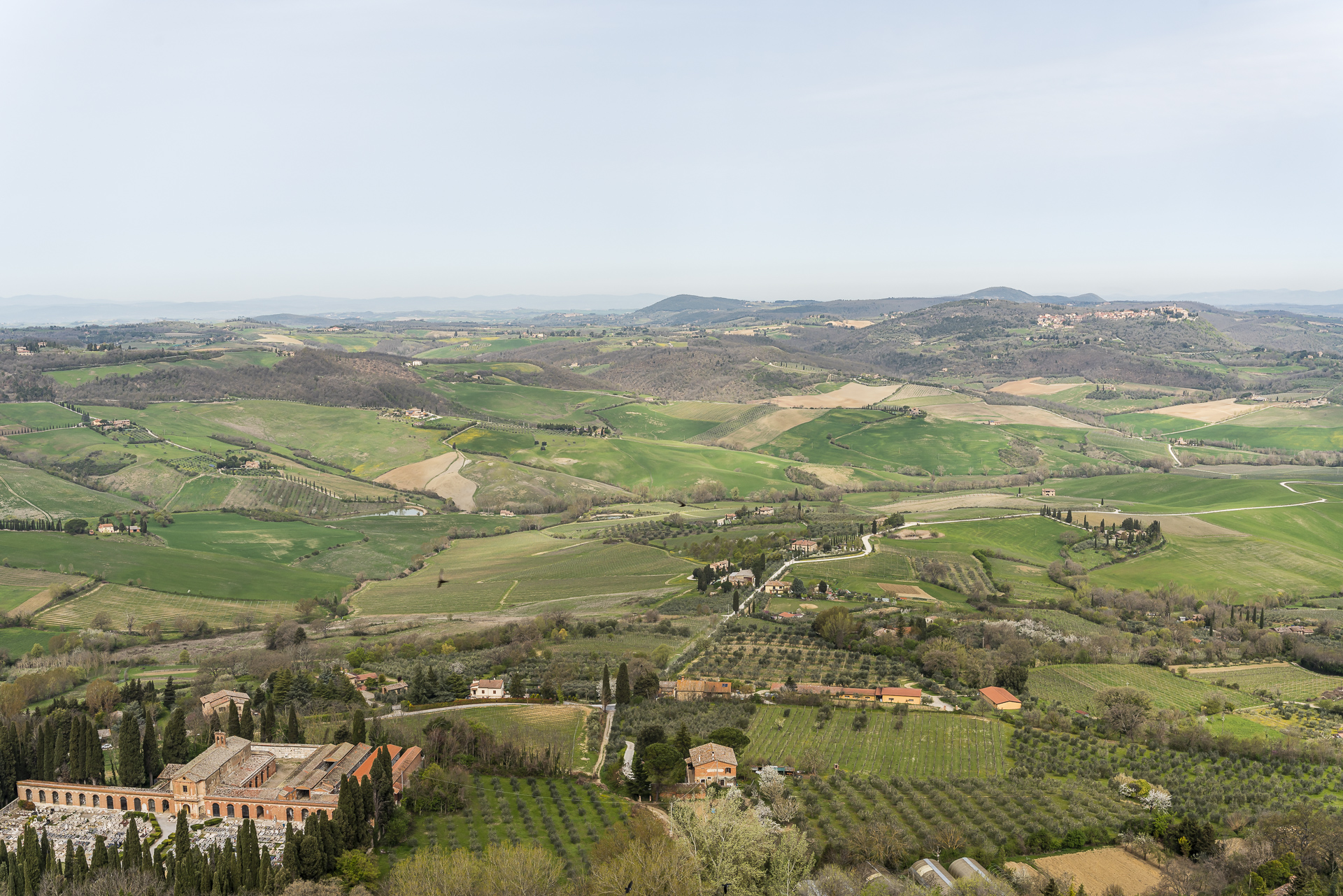
The public (paid) parking facilities are accessible via Via dell’Oriolo and are also signposted accordingly. A particularly large number of parking spaces can be found at P6 on Via delle Case Nuove. The entrance and exit leads over a narrow section of road that only works to a limited extent in oncoming traffic. It is therefore worthwhile to avoid rush hours and plan the detour to Montepulciano in the morning (before 11 am).
3. The panoramic road SP 146
The Val d’Orcia is a popular destination for landscape photographers. If you research travel tips and sights on the Internet in the run-up to your trip, you will come across the same photo spots on various sites. The majority of them are located along Strada Provinciale (SP) 146. The SP 146 runs from Montepulciano via Pienza to San Quirico d’Orcia and is considered one of the most beautiful panoramic roads in Italy.
Real Talk: It’s quite a nice cross-country route to drive that offers beautiful views of the landscape. And you’ll do it either way if you’re planning to go from Montepulciano to Pienza (or vice versa). However, since it is also the main connection between these villages and accordingly not only “Sunday drivers” are on the road, fast driving styles and adventurous overtaking manoeuvres are commonplace. In my opinion, simply stopping to the side for a photo is not recommended for reasons of road safety (at least not during rush hours). Therefore, my tip: enjoy the panorama, but don’t forget to keep an eye on what is happening on the road.
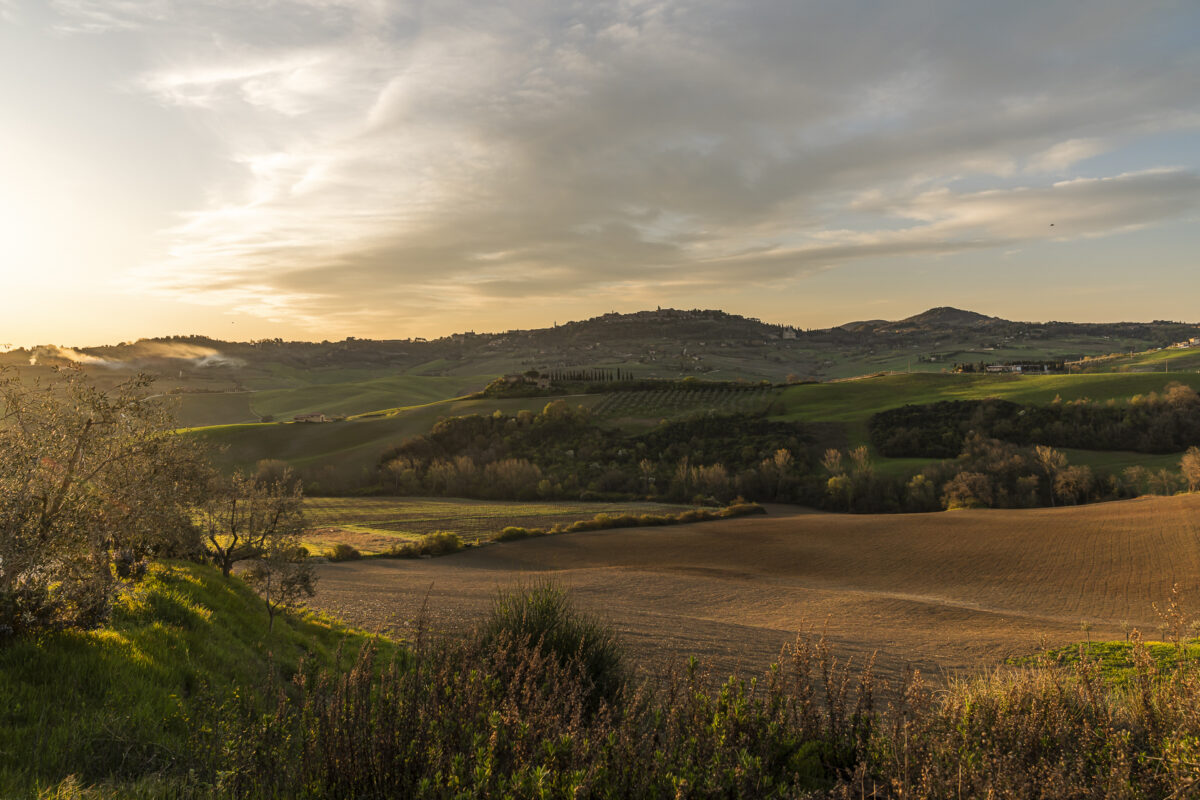
No, the provincial road is not subject to tolls.
4. The Renaissance town of Pienza
Pienza is a 20-minute drive from Montepulciano, in the centre of Val d’Orcia. In addition to being the capital of pecorino, it is also a prime example of Renaissance architecture and was added to the list of World Heritage Sites in 1996 (eight years before the entire Val d’Orcia). I find it exciting that the current appearance of Pienza is the result of a planned “ideal city”. The initiative for this came from Pope Pius II, who, after his election as pope in 1458, wanted to transform his hitherto insignificant hometown into a city with exemplary character.
The old town centre of Pienza is compact and spruced up. The tour along Corso il Rossellino via Pizza Pio II and over the panoramic city wall “Via del Casello” actually takes less than thirty minutes. I therefore recommend combining the stopover in Pienza with lunch at the Trattoria Latte di Luna or stopping off at the Bar Idyllum for the evening “aperitivo”.
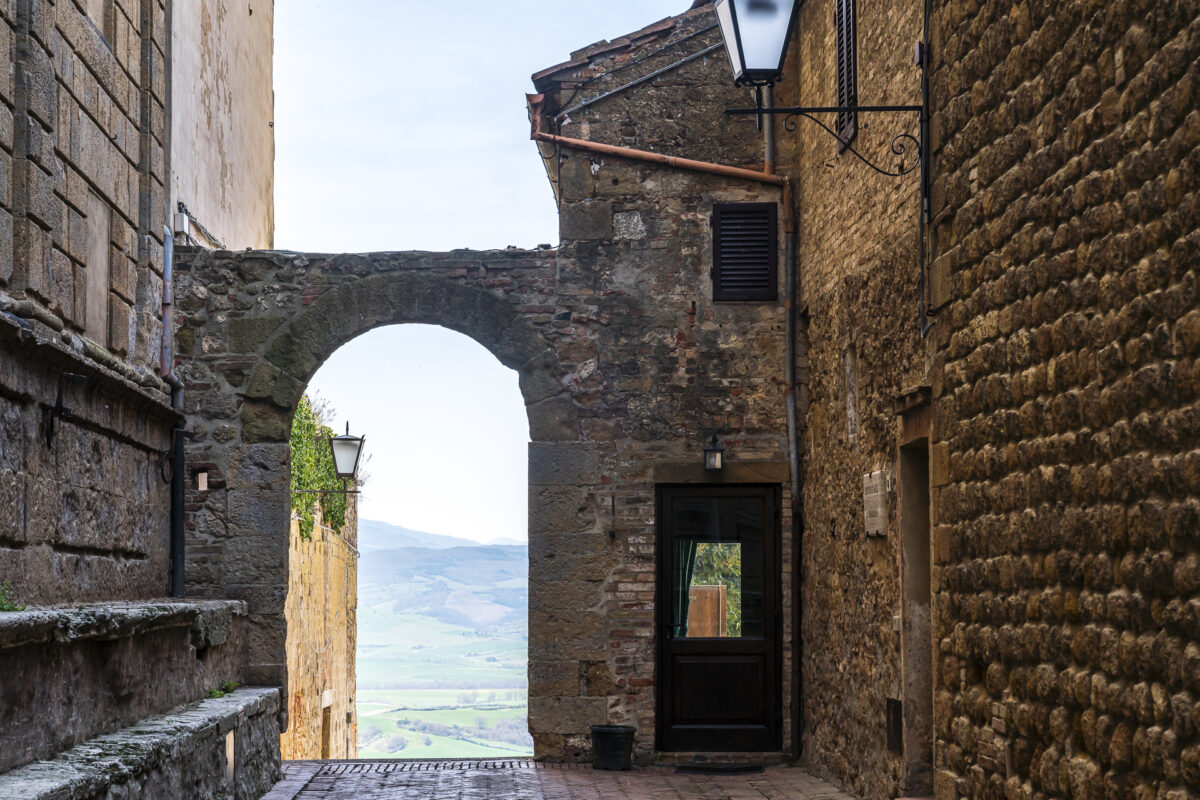
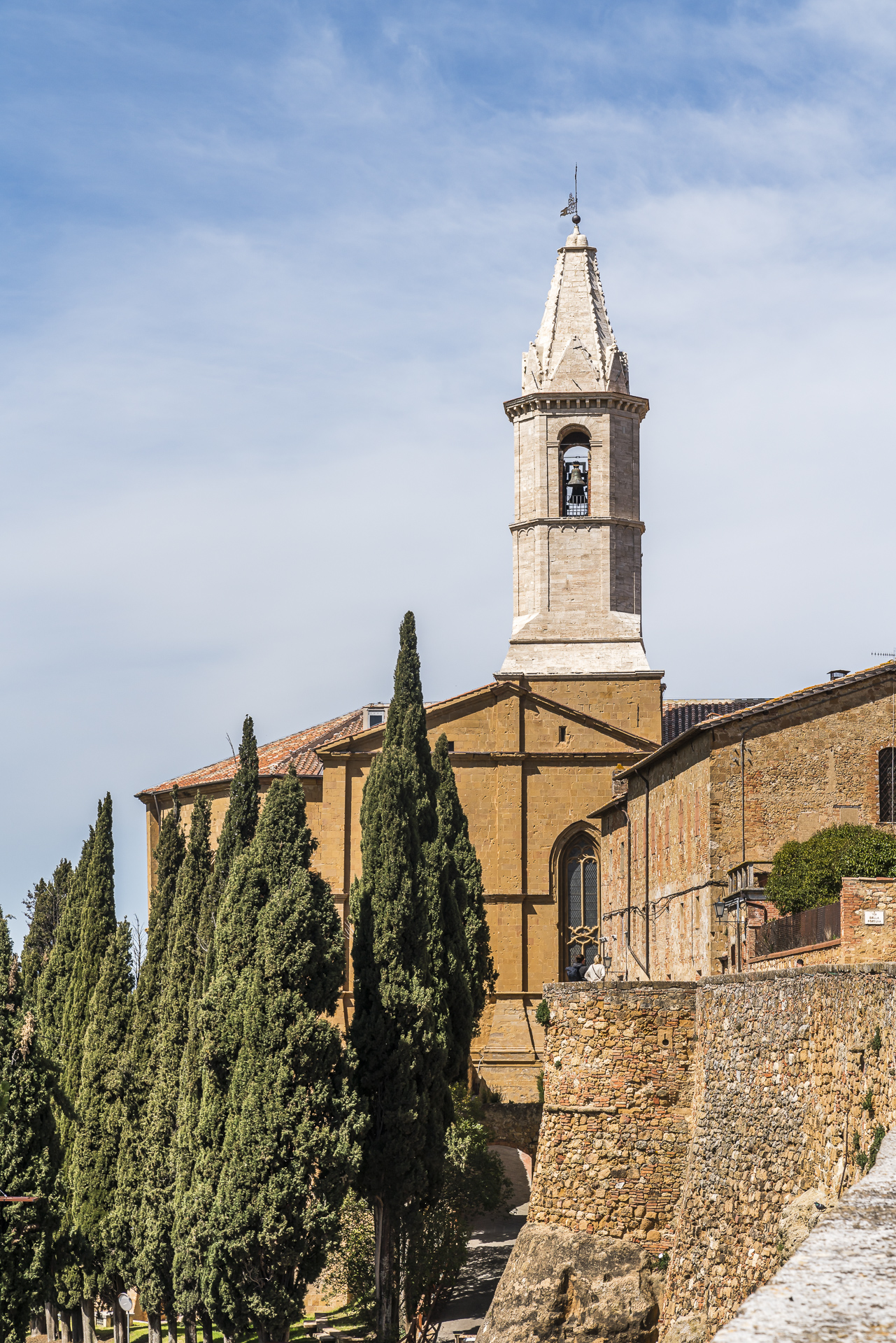
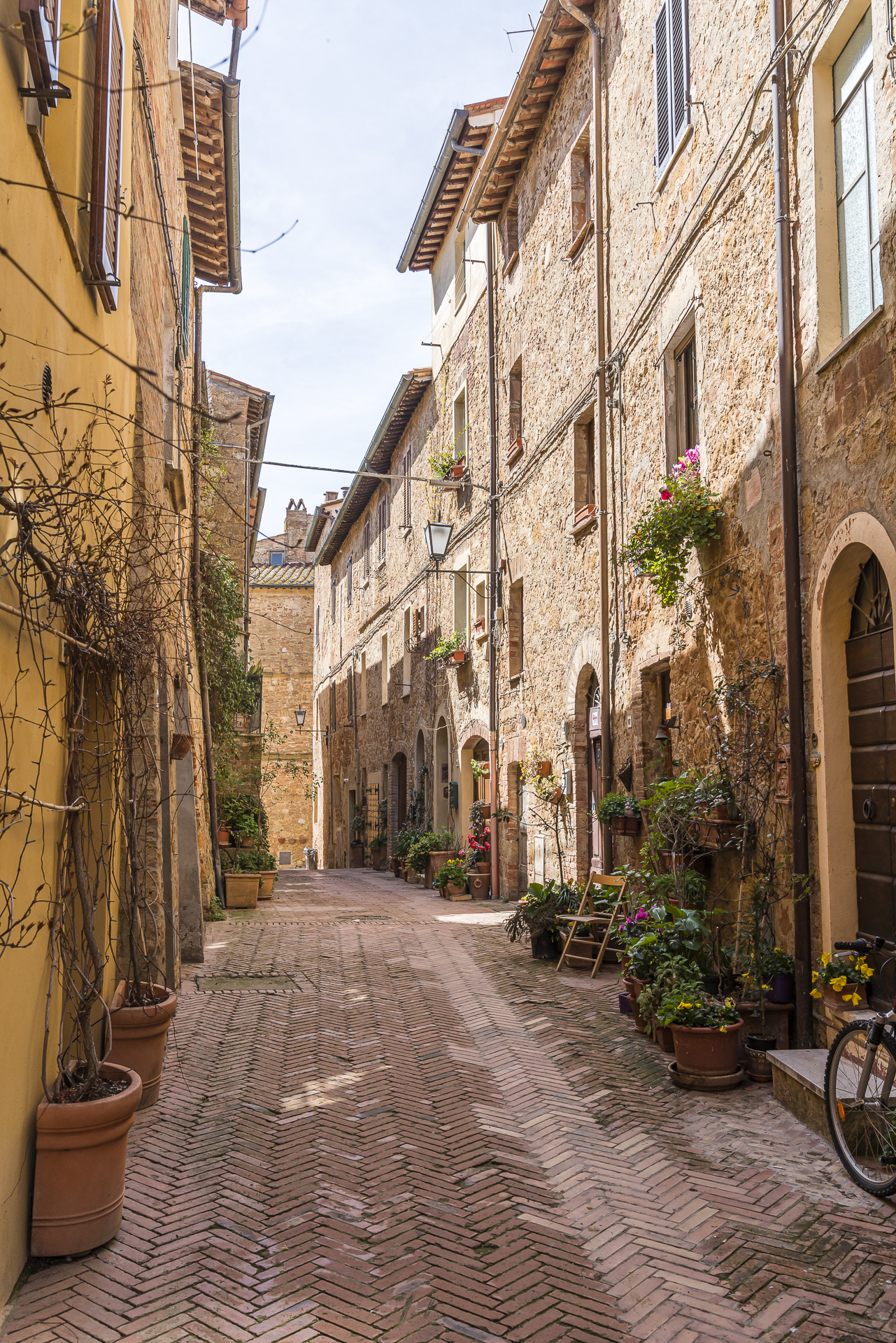
The best parking option in Pienza is a short walk from the old town on Via S. Gregorio. The best thing to do is to mark the location tag “Parking Pienza” on Google. There are a few free parking spaces (marked in white). The rest is subject to a fee (marked in blue).
5. The Brunello stronghold of Montalcino
Of course, all those who are interested in Tuscan wines should also plan a trip to Montalcino during their stay in Val d’Orcia. Brunello di Montalcino (made from 100% Sangiovese grapes) is one of the most prestigious Italian wines with a Protected Designation of Origin (DOC). It can be tasted at various wineries or directly at the entrance to the village in the Enoteca la Fortezza di Montalcino.
Here, you can even kill two birds with one stone: the Enoteca also acts as an entrance gate to the tour of the fortress wall. The entrance ticket (cost: 4 euros) can be bought directly at the Enoteca and then you go up stairs to the battlement, which offers a fantastic view over the rooftops of Montalcino.
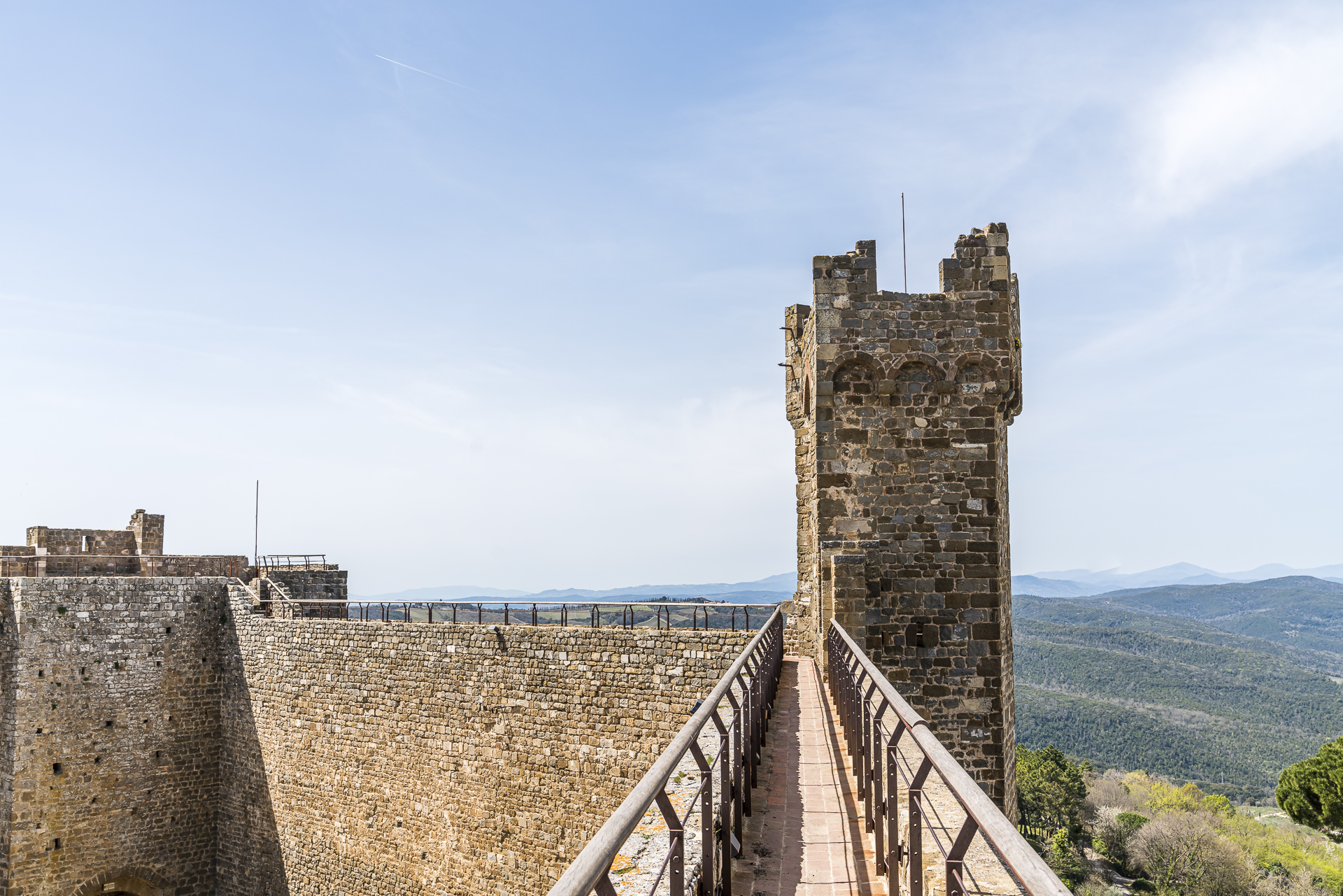
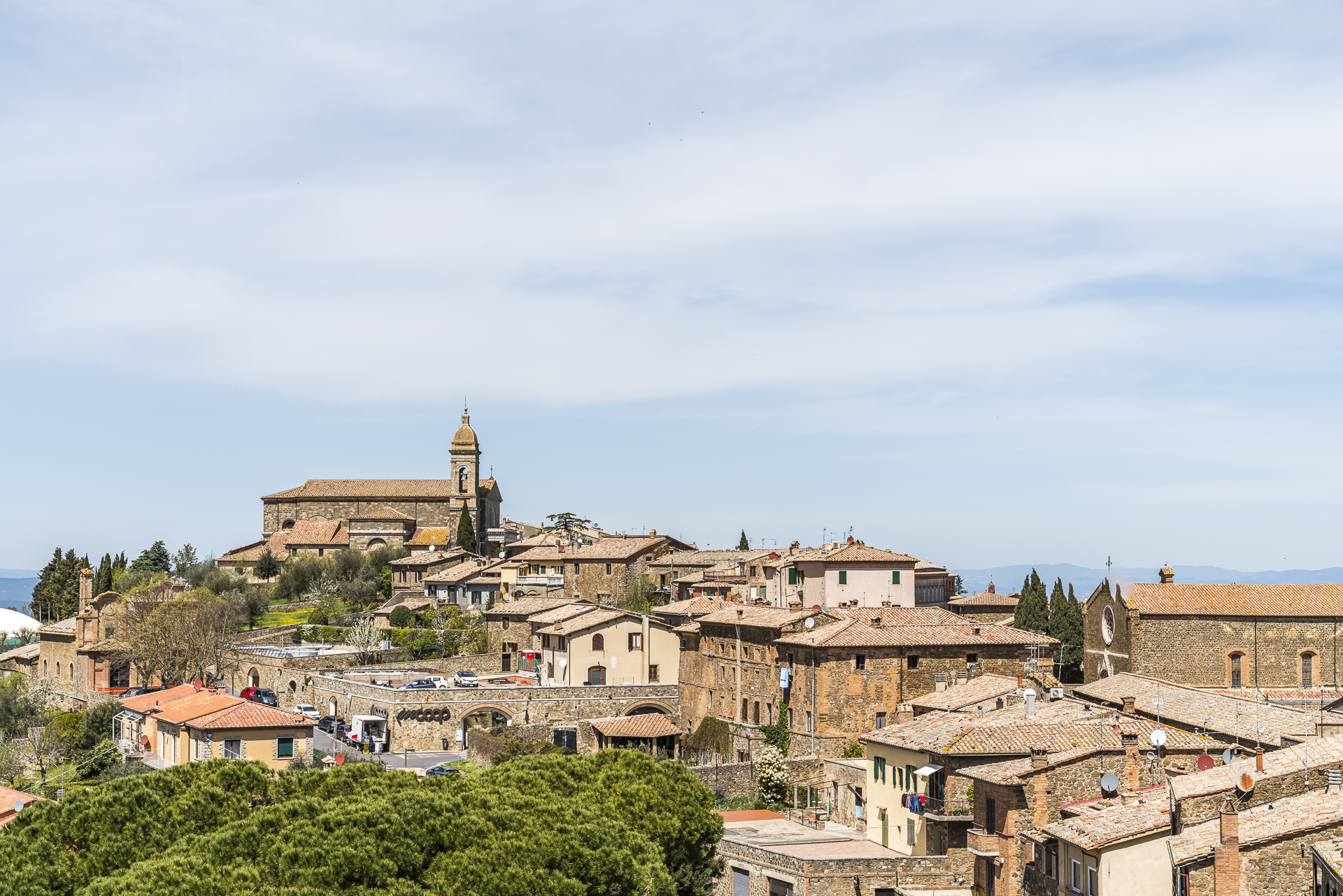
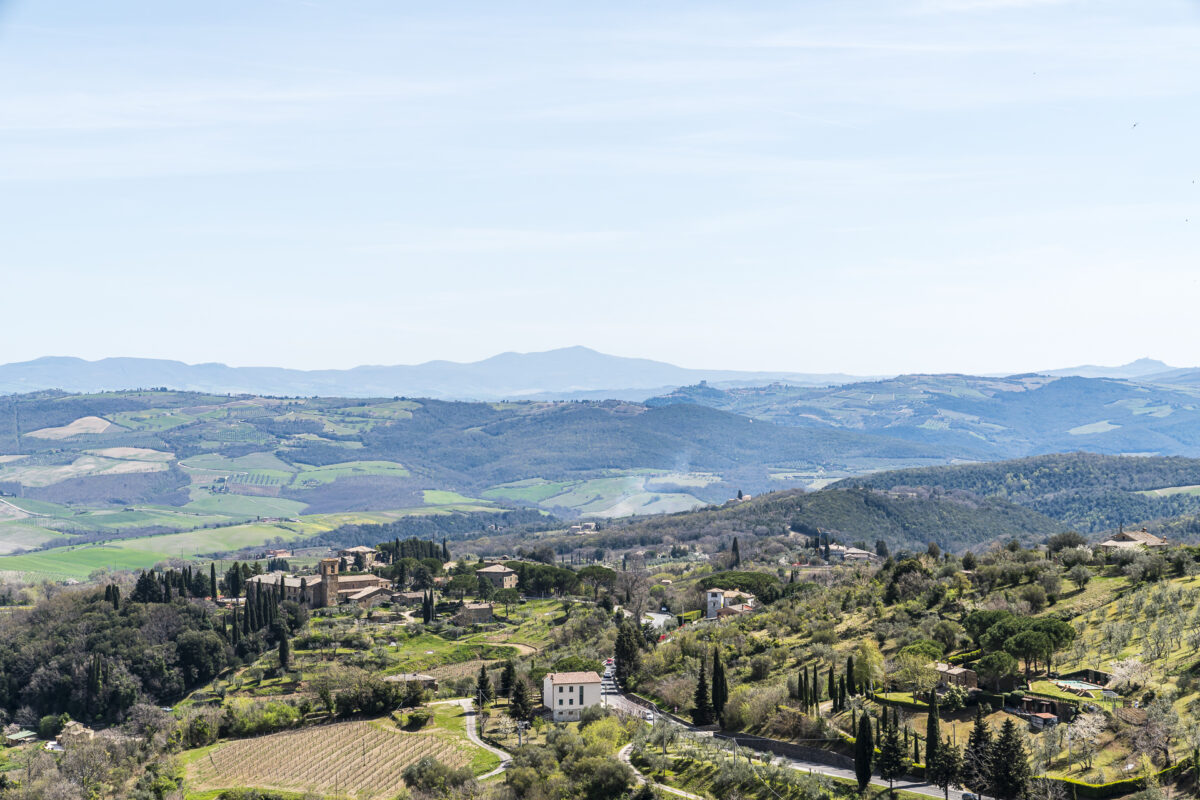
As in Montepulciano and Pienza, it is worth strolling through the alleys of the old town with your nose. Most tourists get stuck in the first third or at the latest at the height of Via Boldrini – the further you walk towards Porta Burelli, the fewer people you meet.

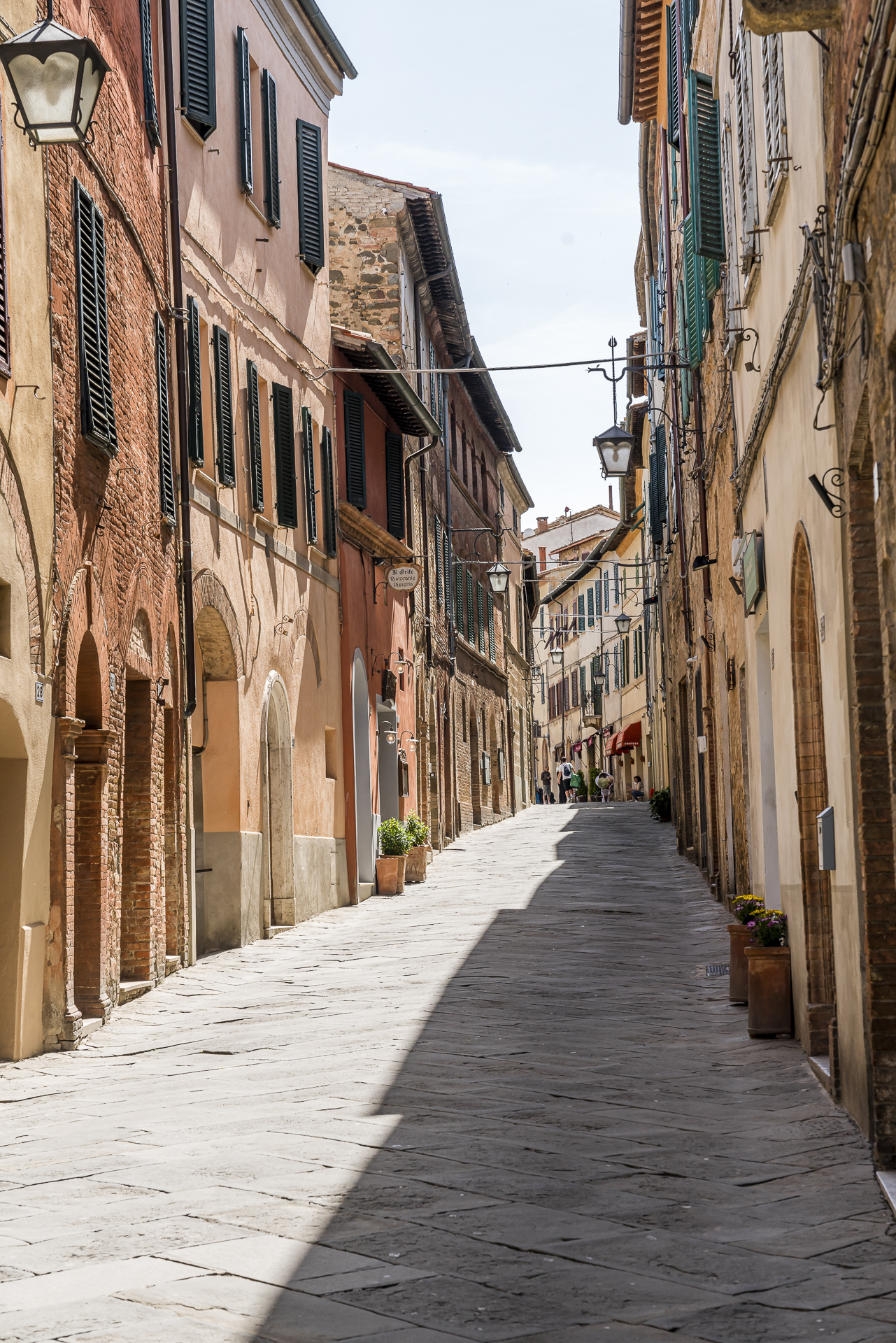
Montalcino has a relatively large parking area (for a fee) directly below the old town centre at the level of Via Aldo Moro. From here you can walk to the fort in a few minutes. Very accessible and usually you should be able to find a place here without any problems.
6. Cortona founded by the Etruscans
Strictly speaking, Cortona is no longer located in the Val d’Orcia (province of Siena), but in the neighboring province of Arezzo. For me, the historic city, which is considered one of the most important and oldest sites of the Etruscans, has moved onto my radar when researching interesting restaurants in the vicinity of Montepulciano. Compared to Pienza, Montalcino or Montepulciano, Cortona has a comparatively large old town centre, which is surrounded on three sides by high walls. Inside, life pulsates – especially after work.
I really liked this relaxed atmosphere and next time I would definitely take more time for Cortona. In any case, mark the viewpoint Belvedere di Cortona – from here you can see as far as Lake Trasimeno.
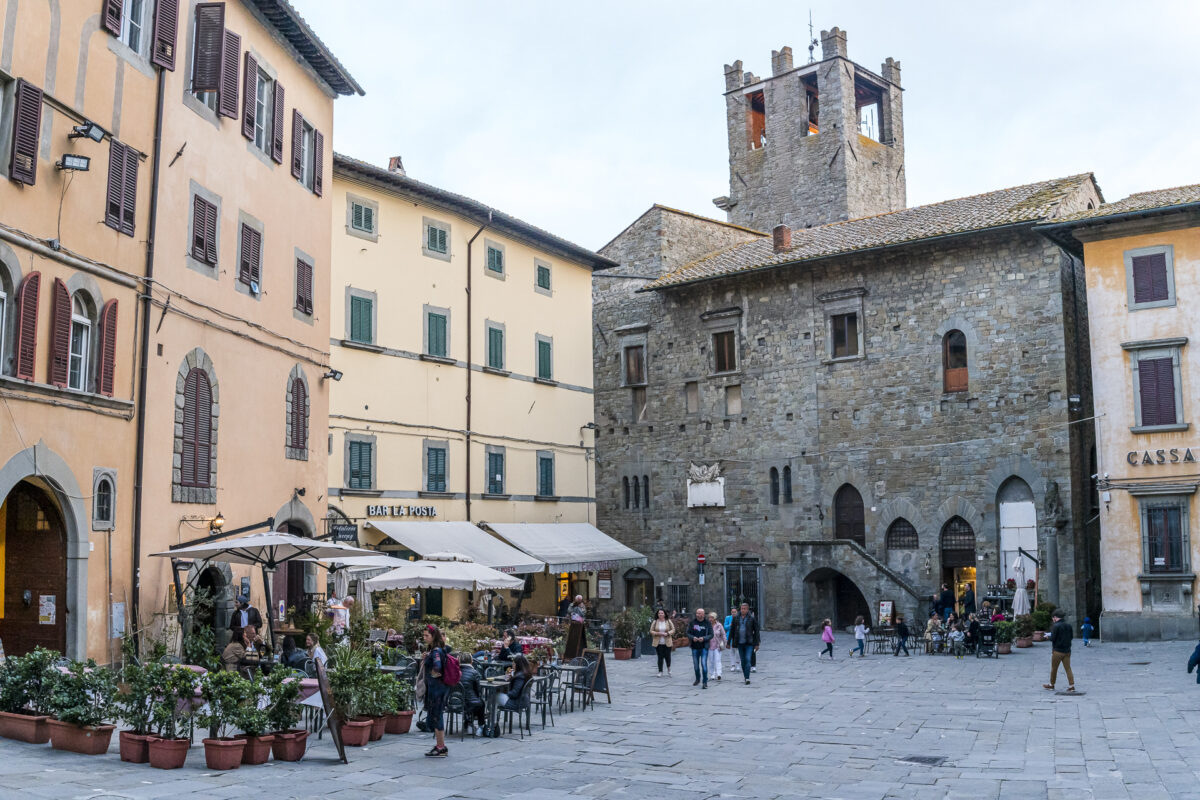
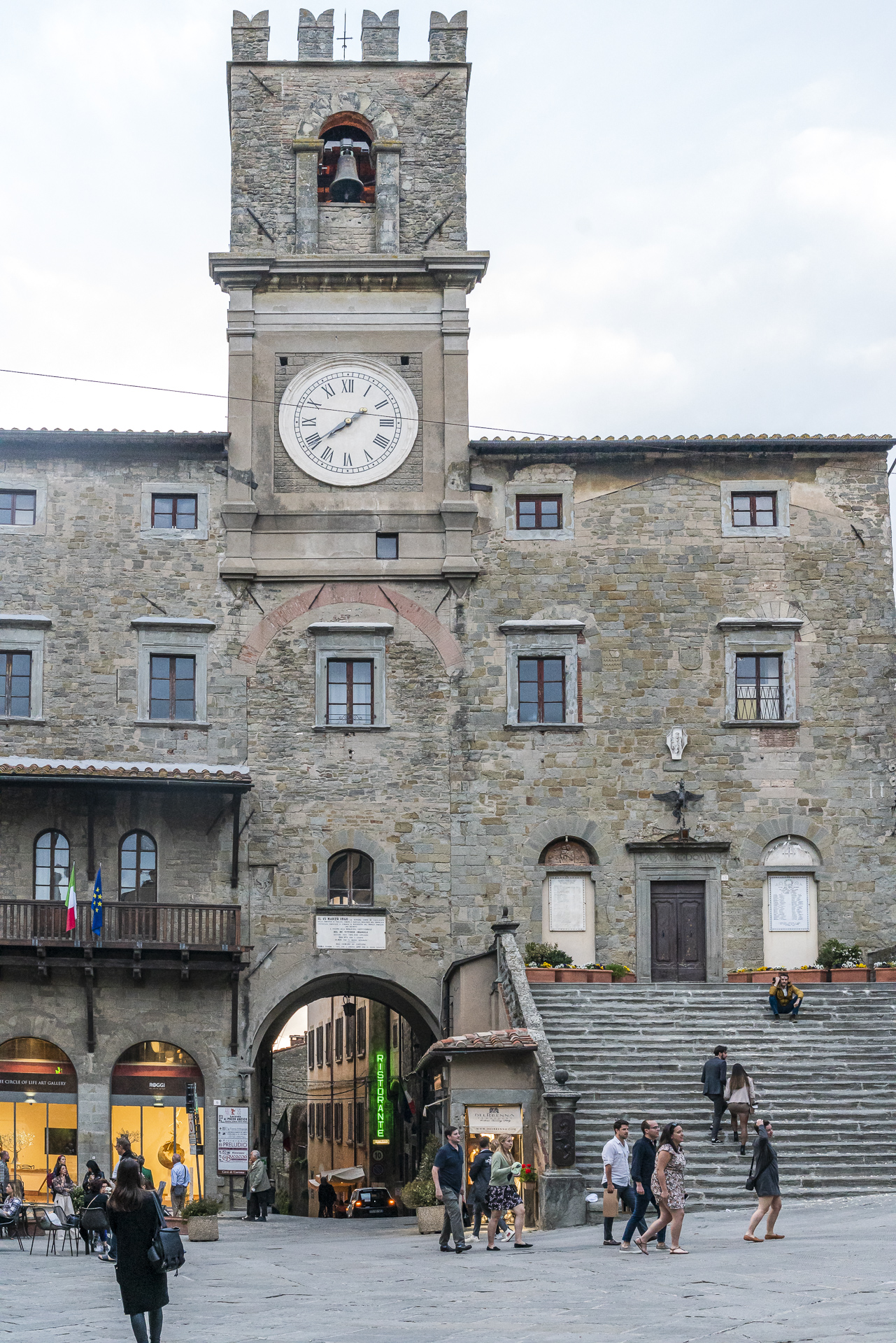
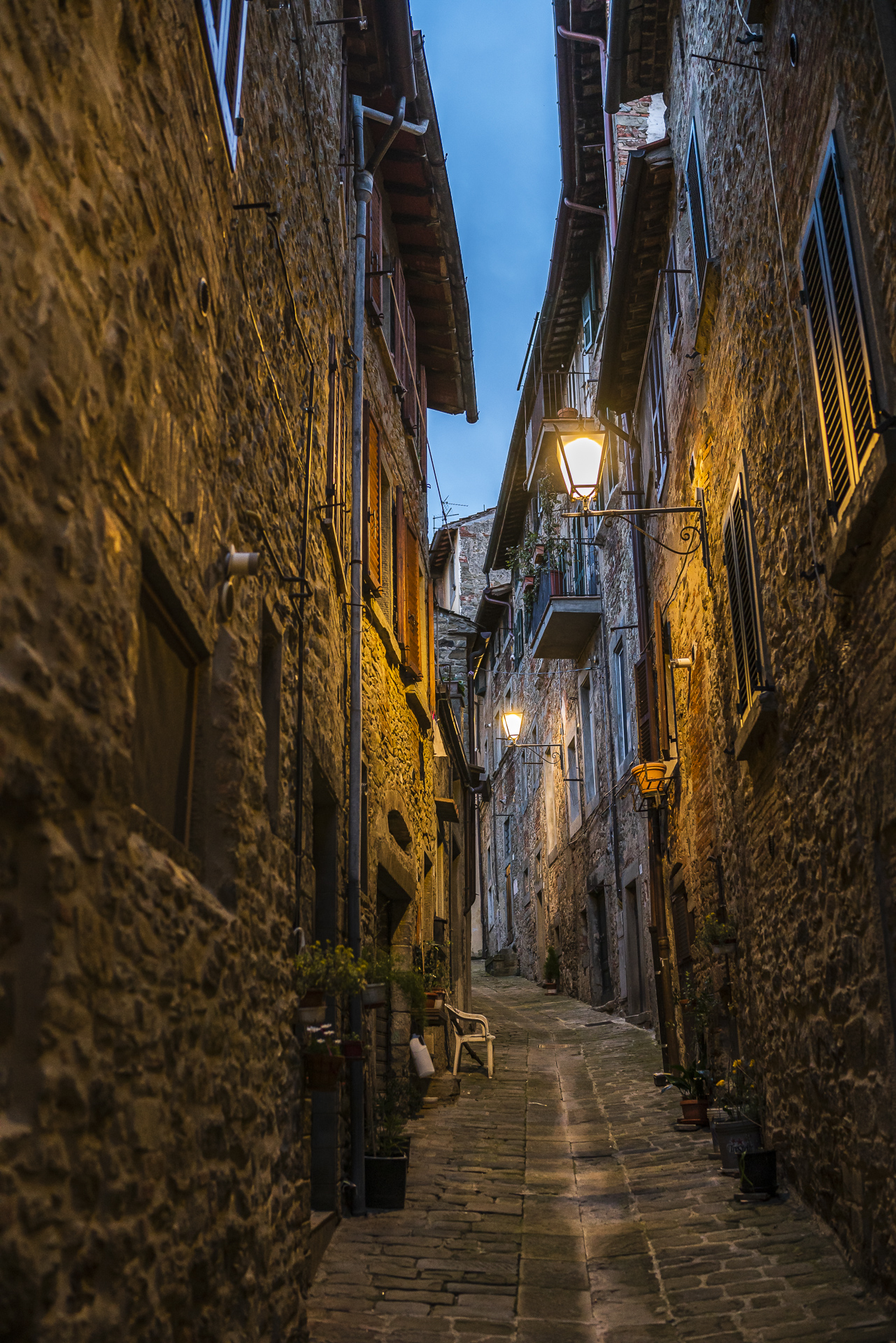
Parking is available along the SP 34, which runs around the old town of Cortona. The Porta Colonia car park is very conveniently located. However, this is usually very well filled. On the somewhat more hidden Parcheggio Porta Colonia inferiore you usually have a little more luck. Parking is free here.
7. Fine Dining Highlight: Organika Ristorante
The real reason for our detour to Cortona – the Organika Ristorante – is a ten-minute walk outside the old town center behind the Chiesa Santa Maria Nuova. I had discovered the Organika among the restaurant recommendations of the Lupaia, which had been carefully compiled for the guests. The good reviews and words of praise up to “Michelin Star quality” made us curious. The dinner was really delicious from A to Z – even if the portions were sometimes a bit too generous for us. The Organika has only four tables inside and thus offers a very personal atmosphere. In the summer months, meals are served outside in the garden.
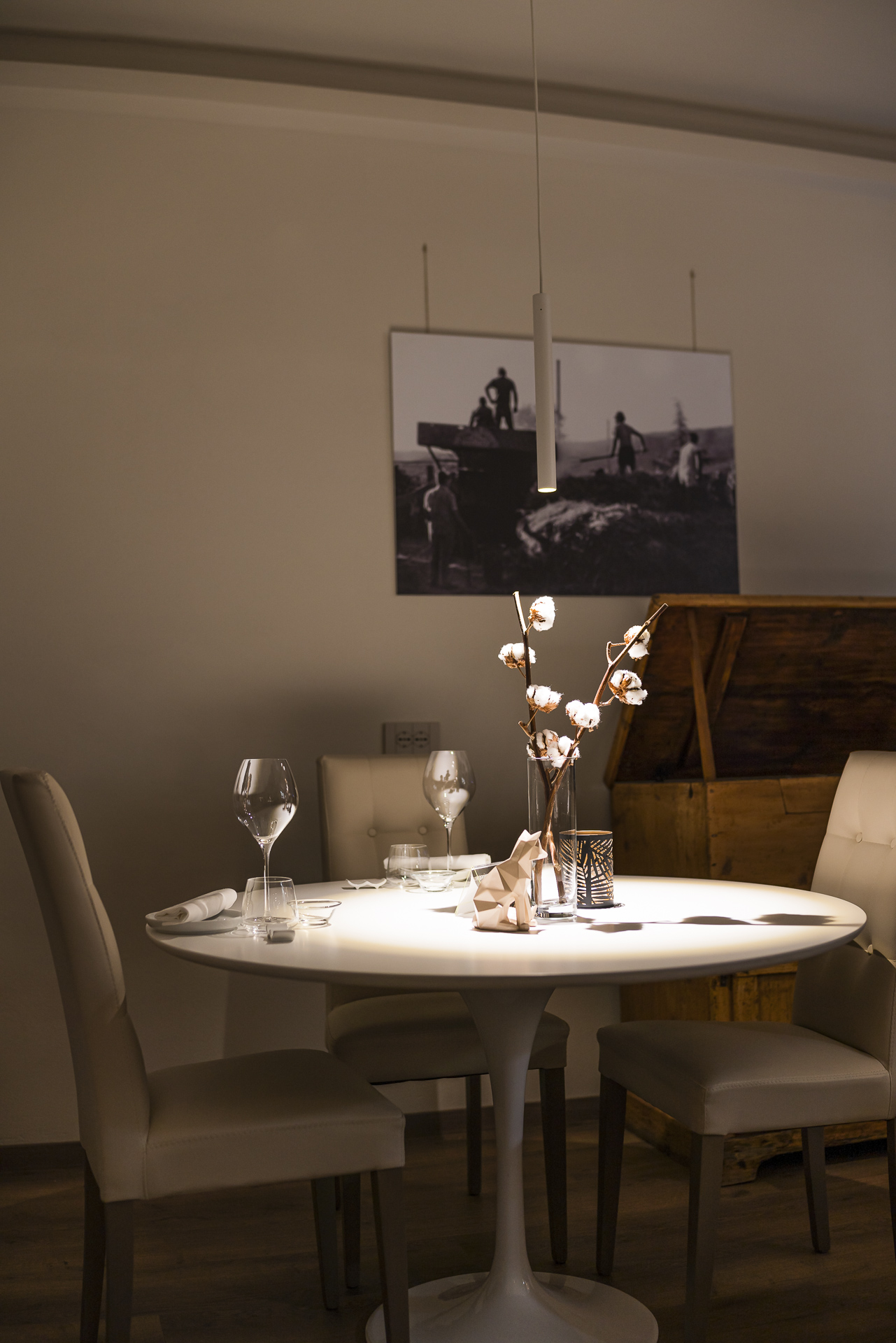
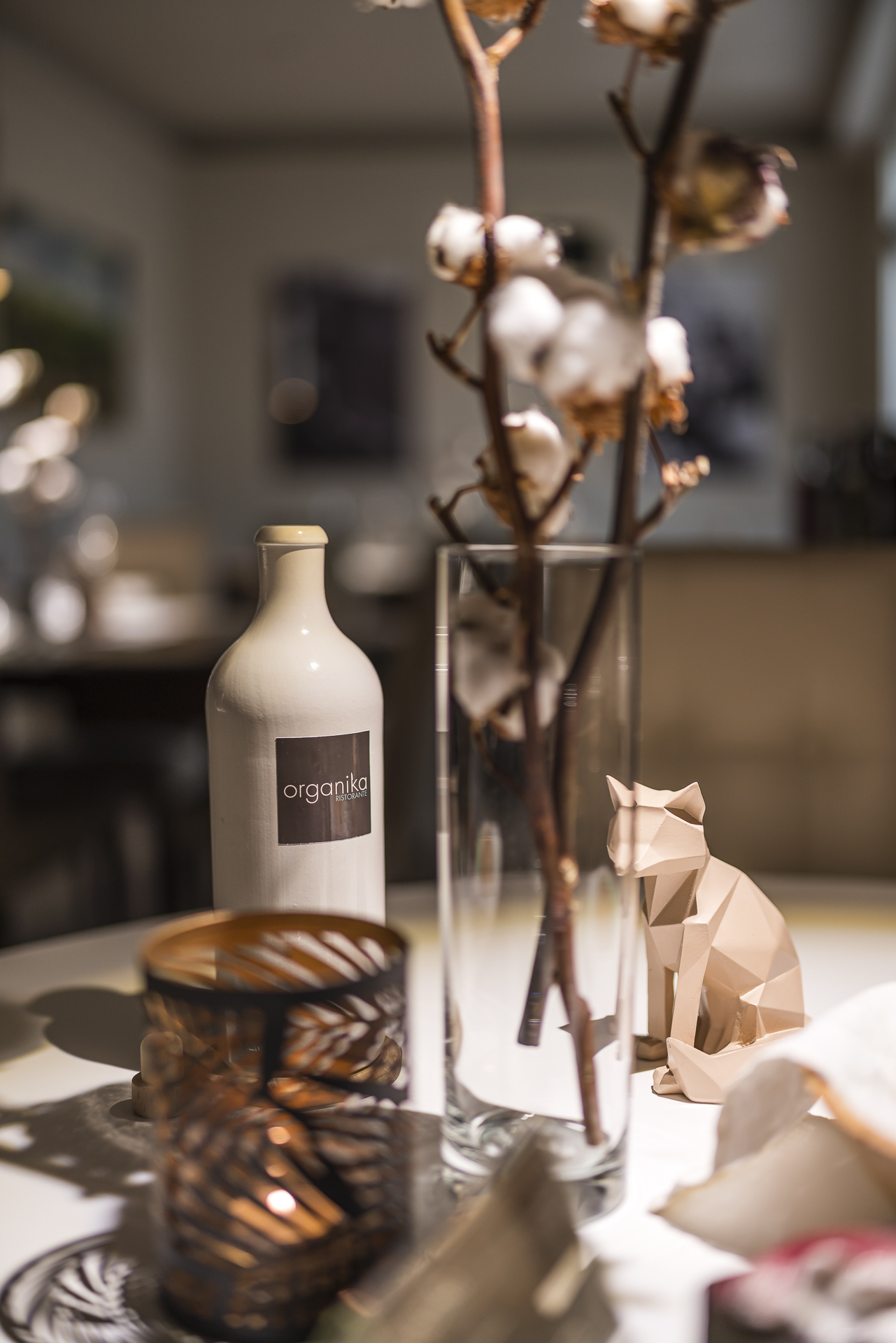
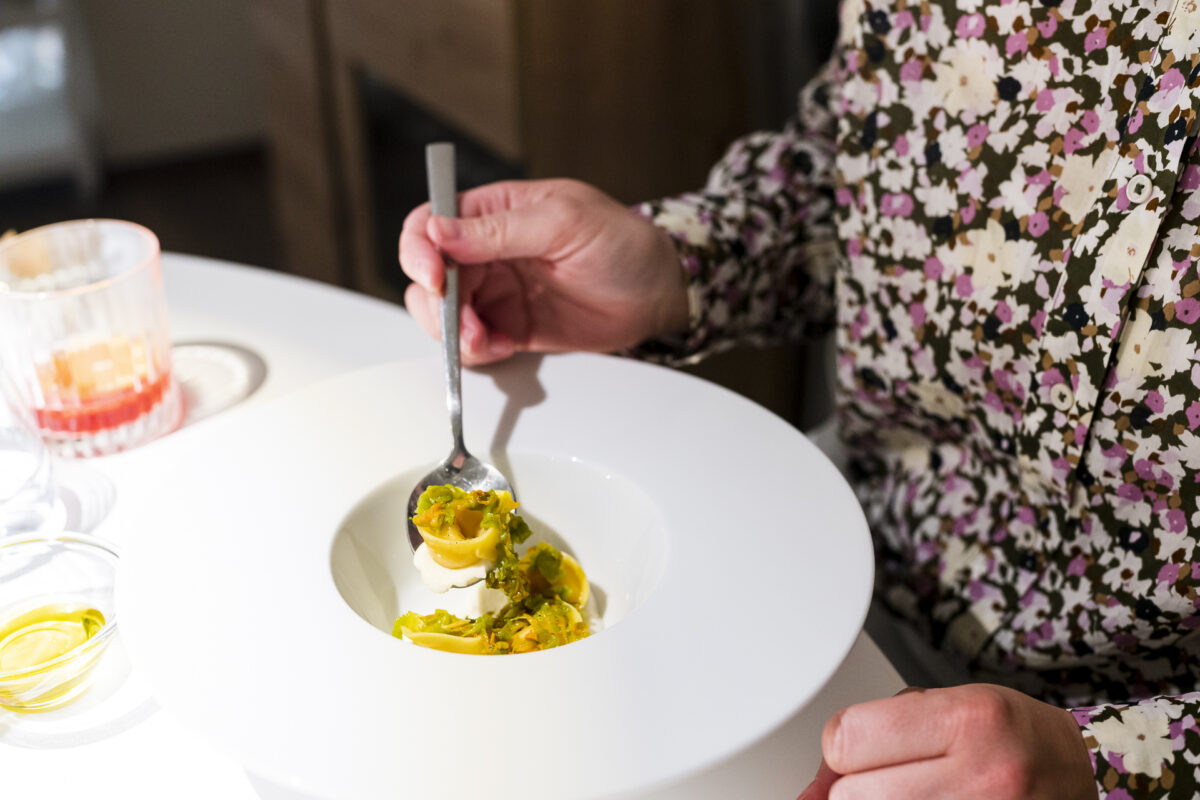
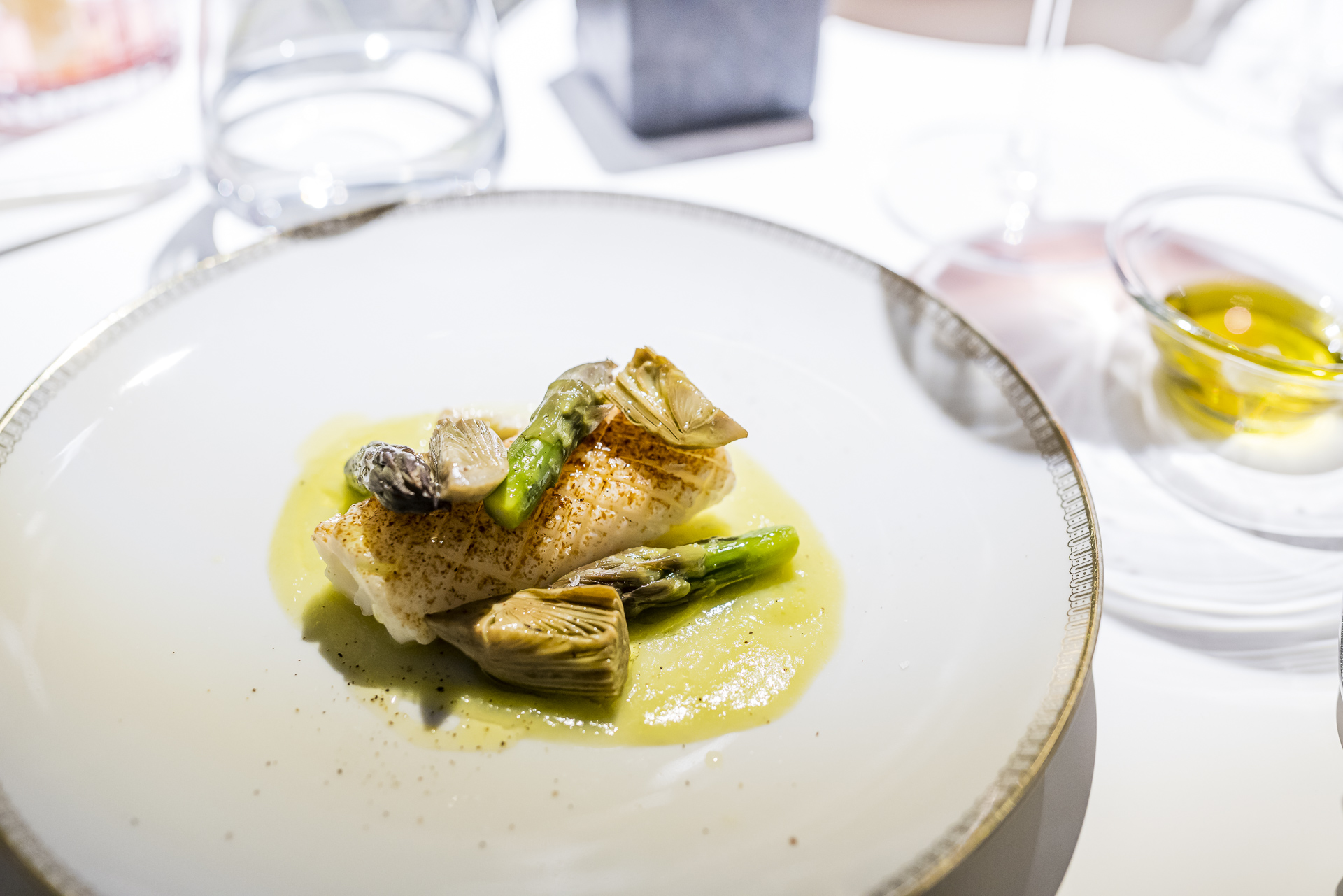
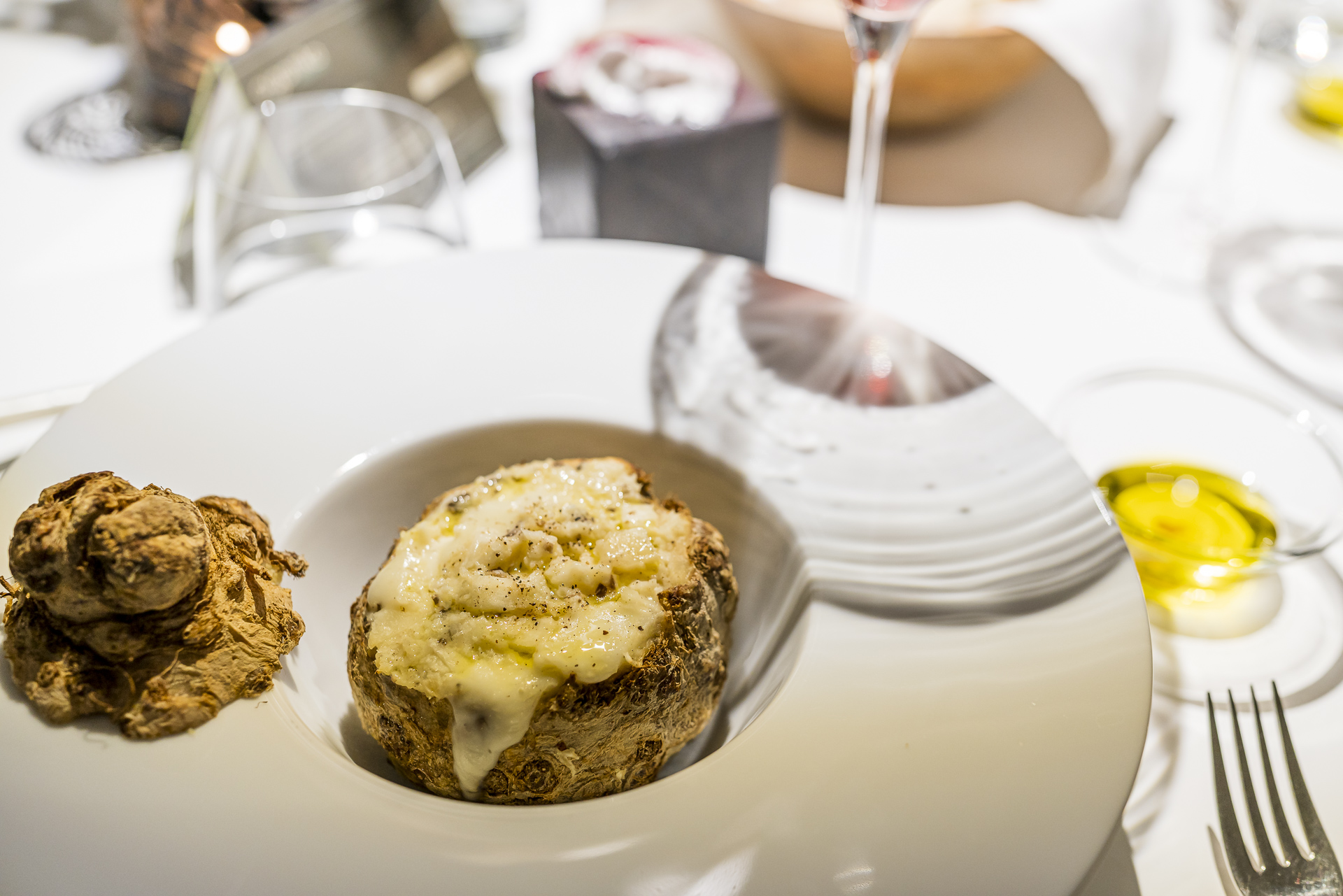
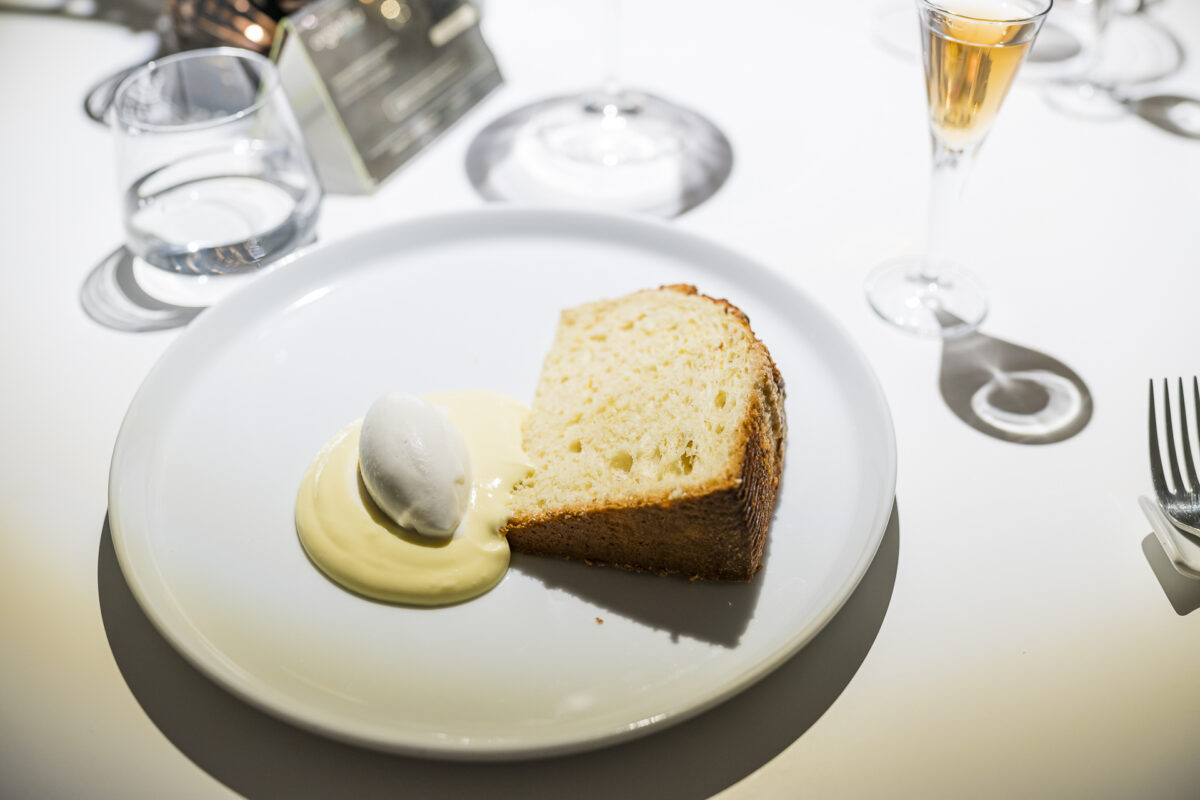
Organika offers a 5-course menu for 50 euros and a 10-course menu for 70 euros. A wine accompaniment with 3 glasses plus a glass of homemade Vinsanto costs 20 euros.
Practical tips for a trip to Val d’Orcia – Tuscany short trip
- By train, the journey from Zurich to Montepulciano takes around 9.5 to 10 hours (depending on the connection). By car, a journey time of seven hours should be planned. By the way, we opted for a combination of both and took the train to Milano Malpensa and rented a car there.
- There are bus connections between the individual towns. On site, however, you are definitely more flexible with your own car. Especially because the agriturismo and country estates are usually not directly accessible by public transport.
- Spring (April/May) and autumn (October/November) are suitable as a time to travel. It should be noted that the “season” does not begin until Easter and usually ends at the beginning/middle of October. Out of season, it is to be expected that some restaurants will have company holidays and not all attractions will be open.
- If you are interested in those photo spots that are symbolic of the Val d’Orcia, you can find a corresponding compilation in the blog post of Summer Days.
- A trip to Val d’Orcia can be combined with a visit to Florenceor Siena, depending on your time budget. Even though Florence is indisputably a beautiful city, I couldn’t really make friends with it due to the masses of tourists and prefer Siena.
- Other places worth visiting are San Gimignano (between Florence and Siena) and the Umbrian capital Perugia. The drive from Lupaia to Perugia, for example, takes just over an hour.


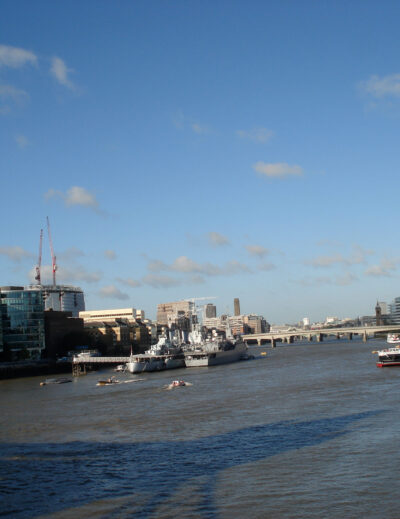
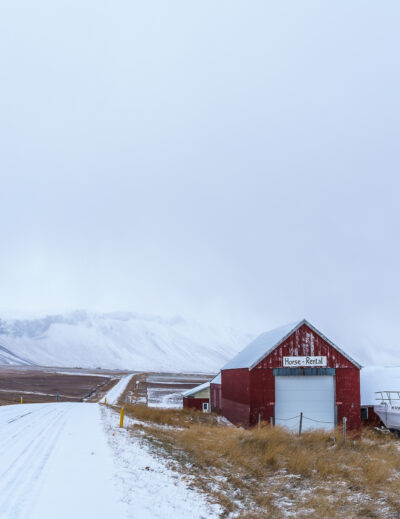
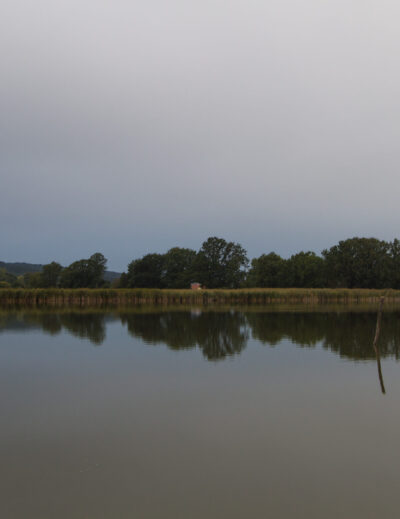
Leave a Reply